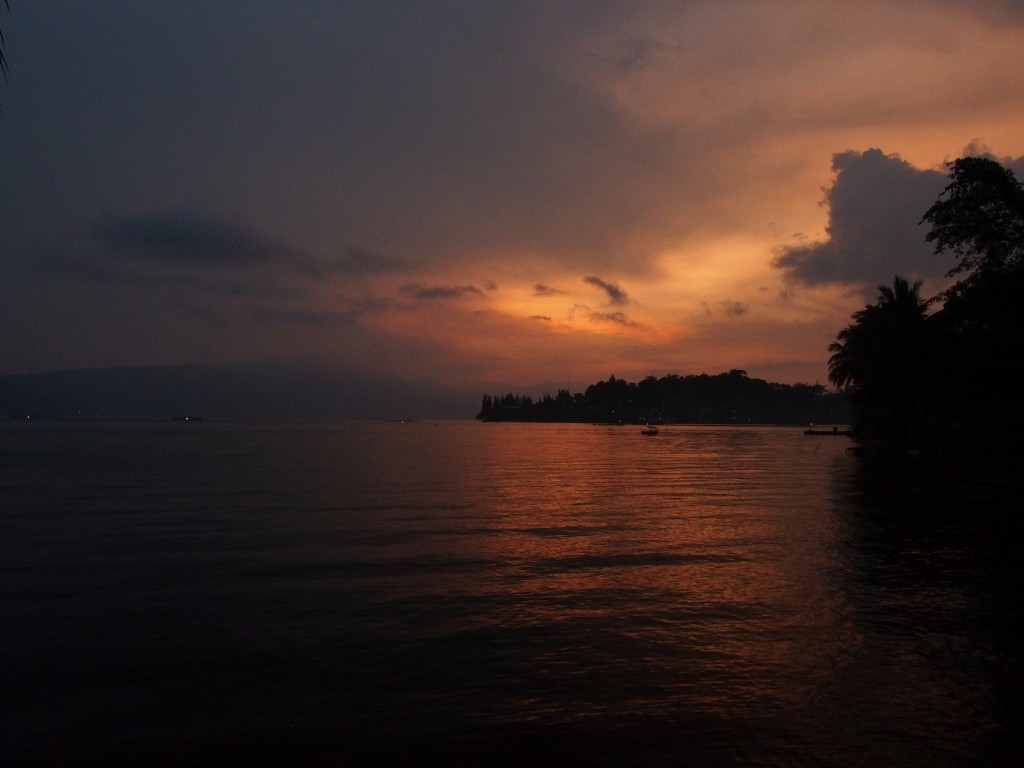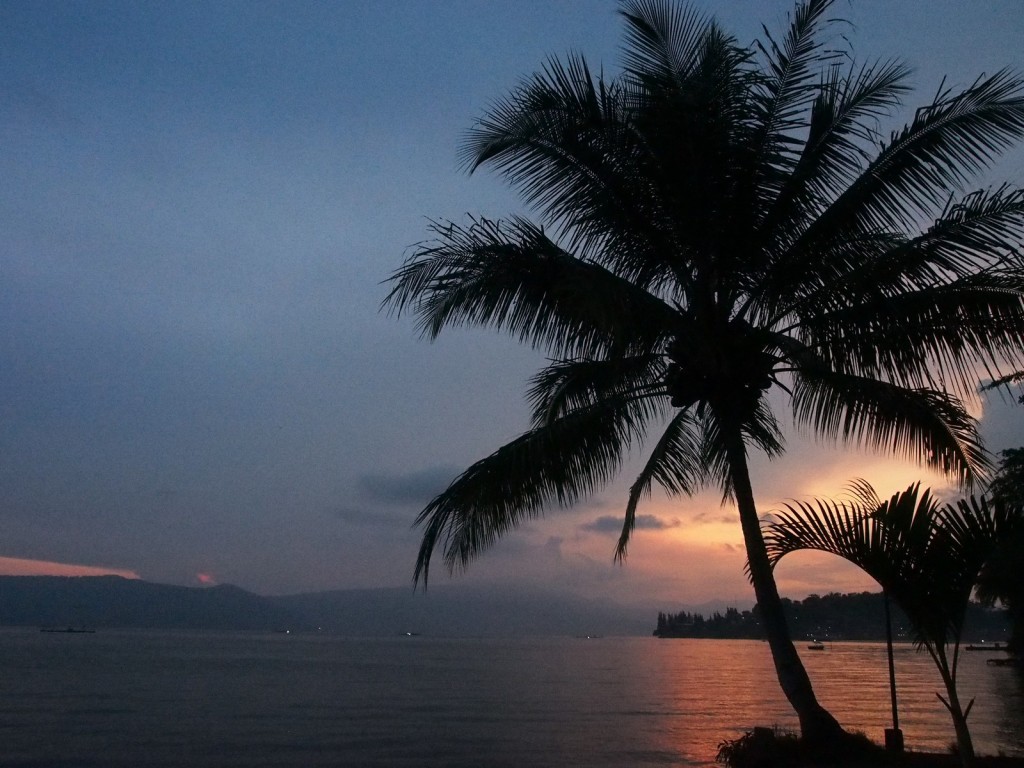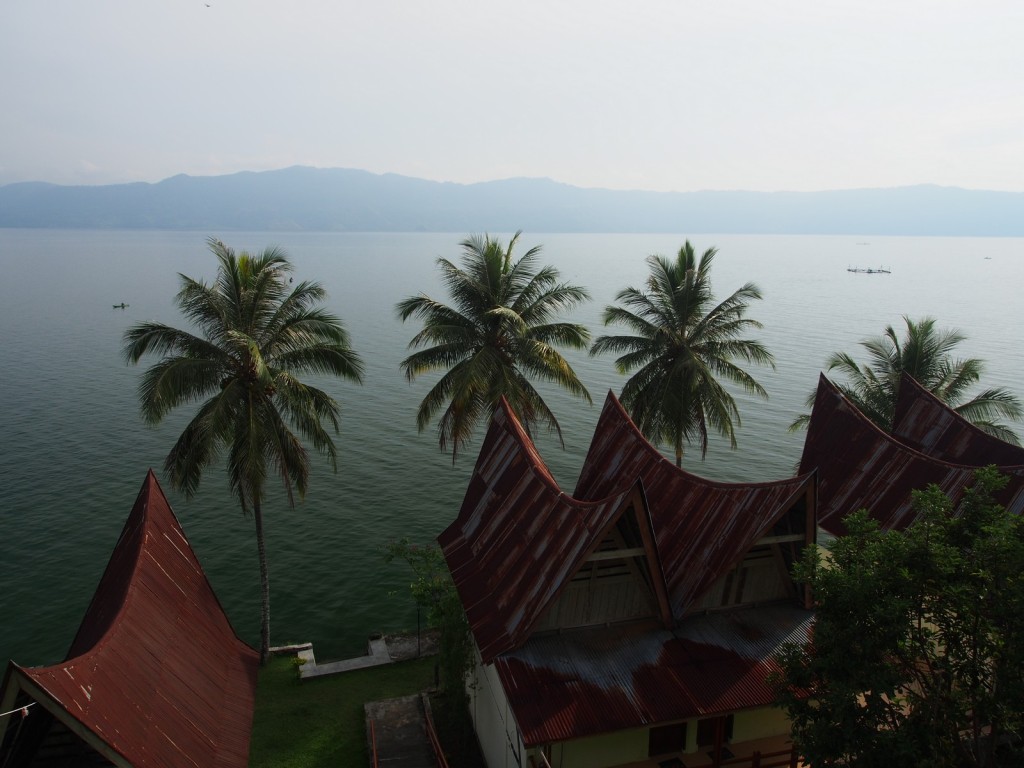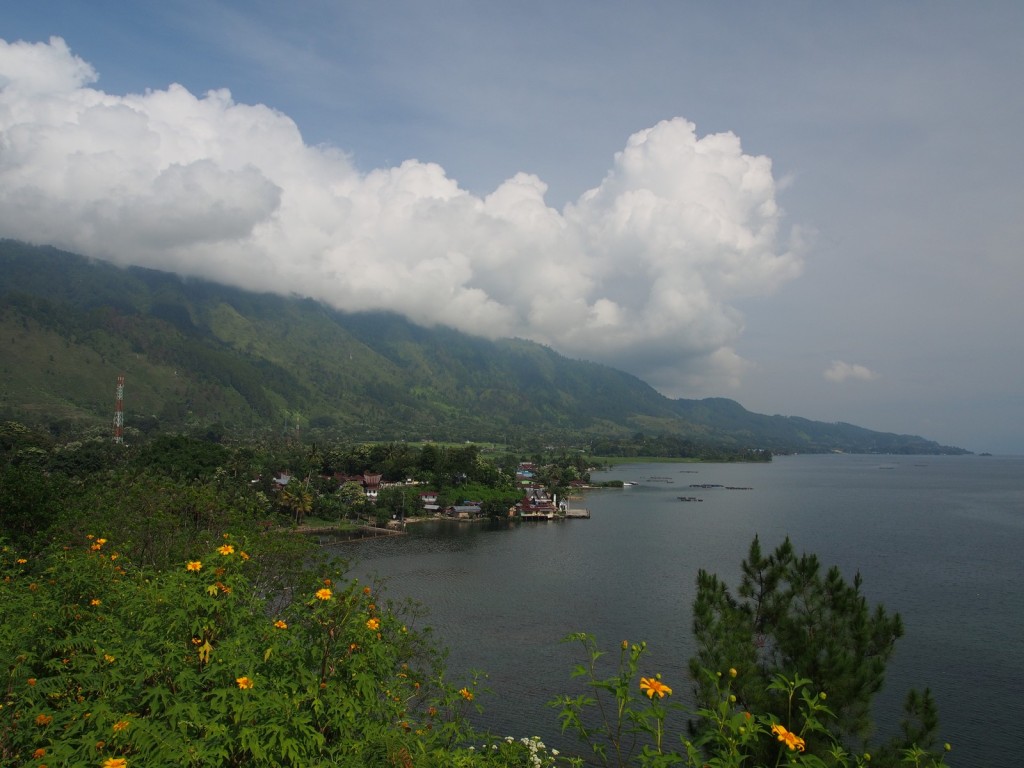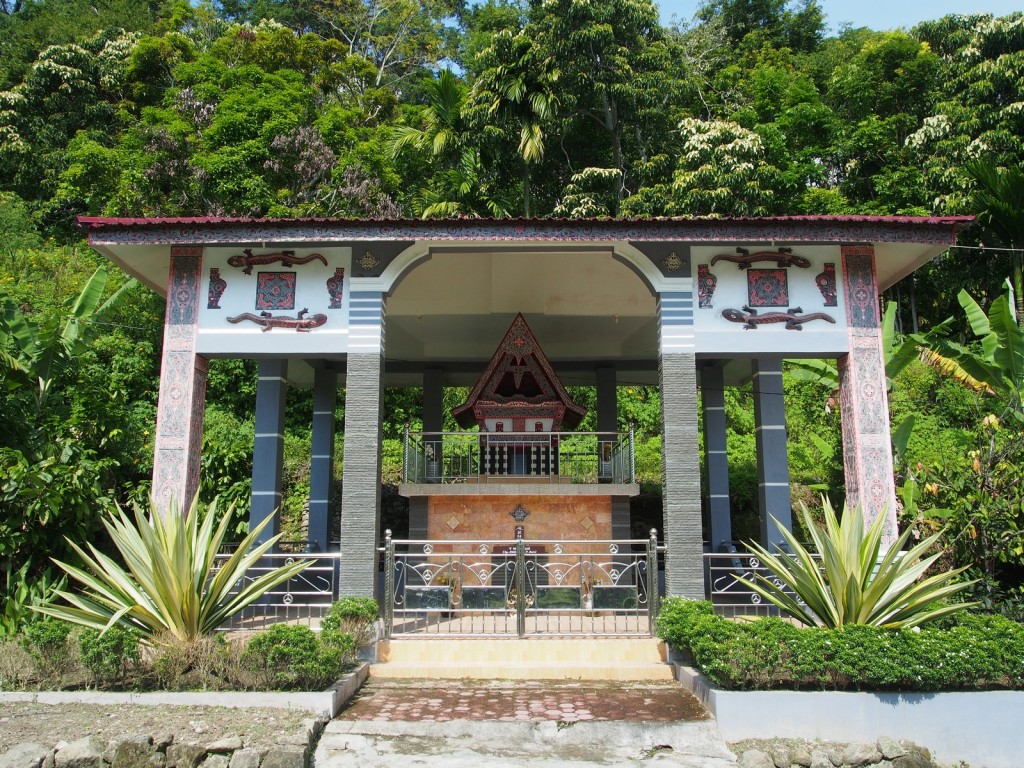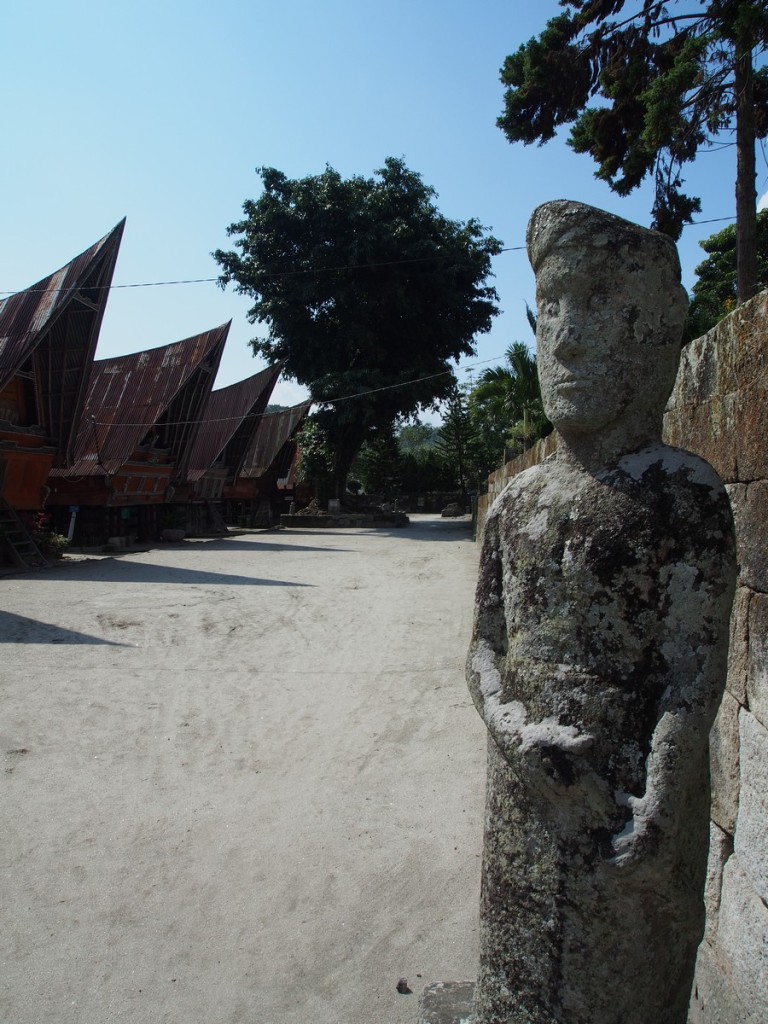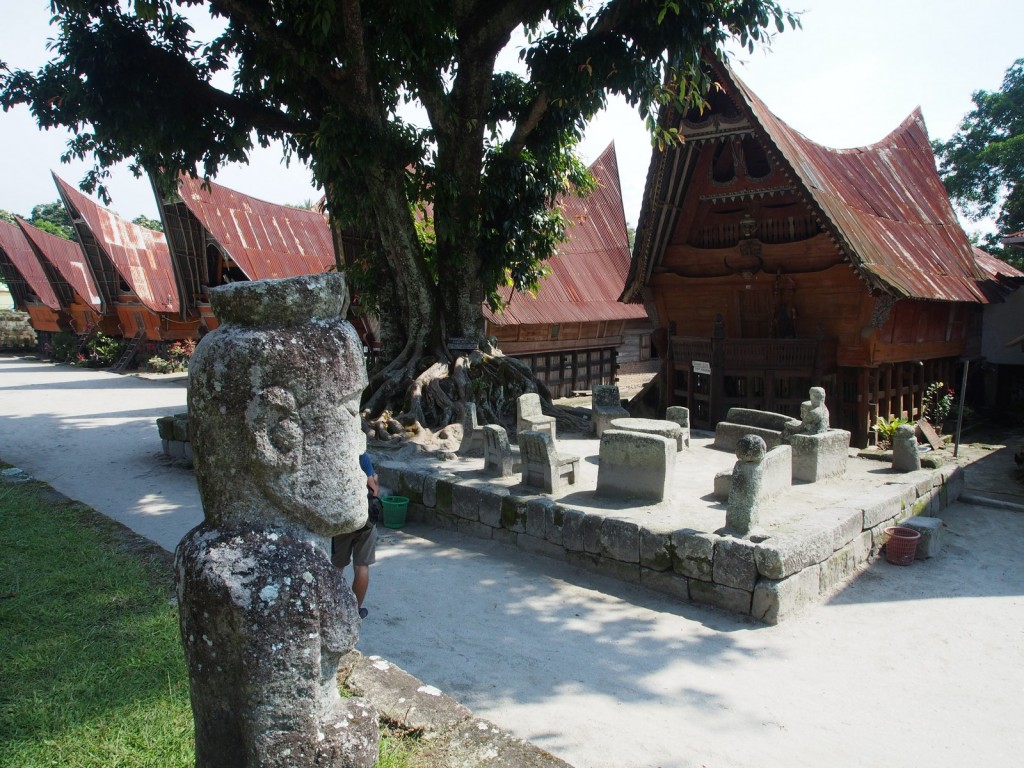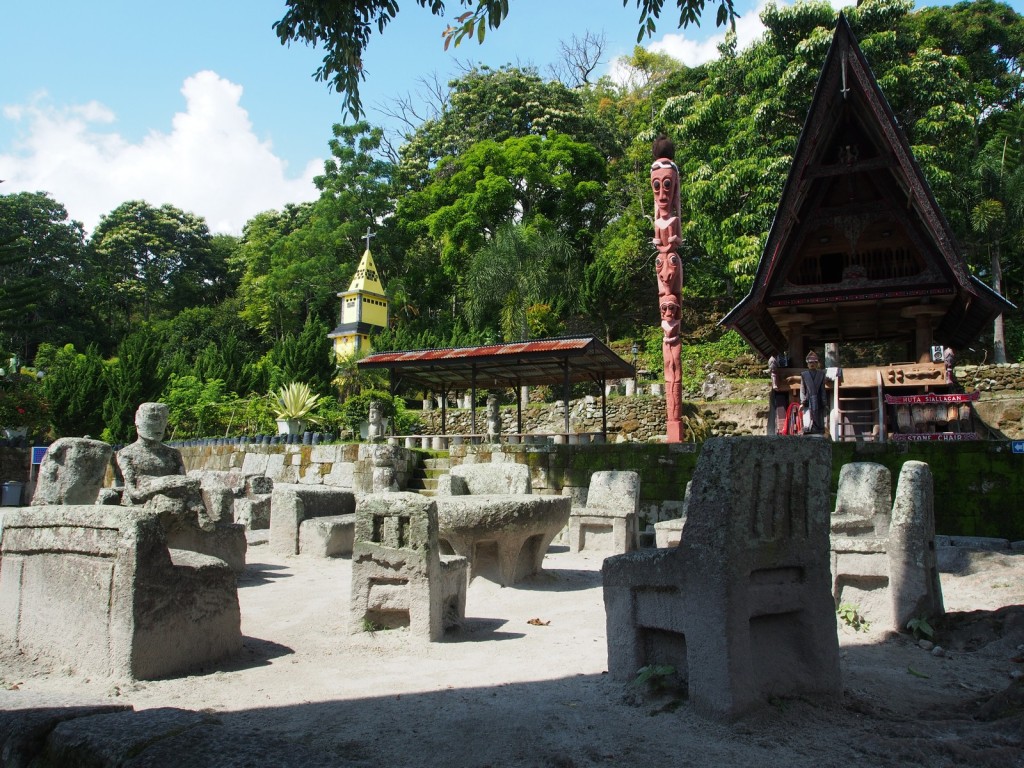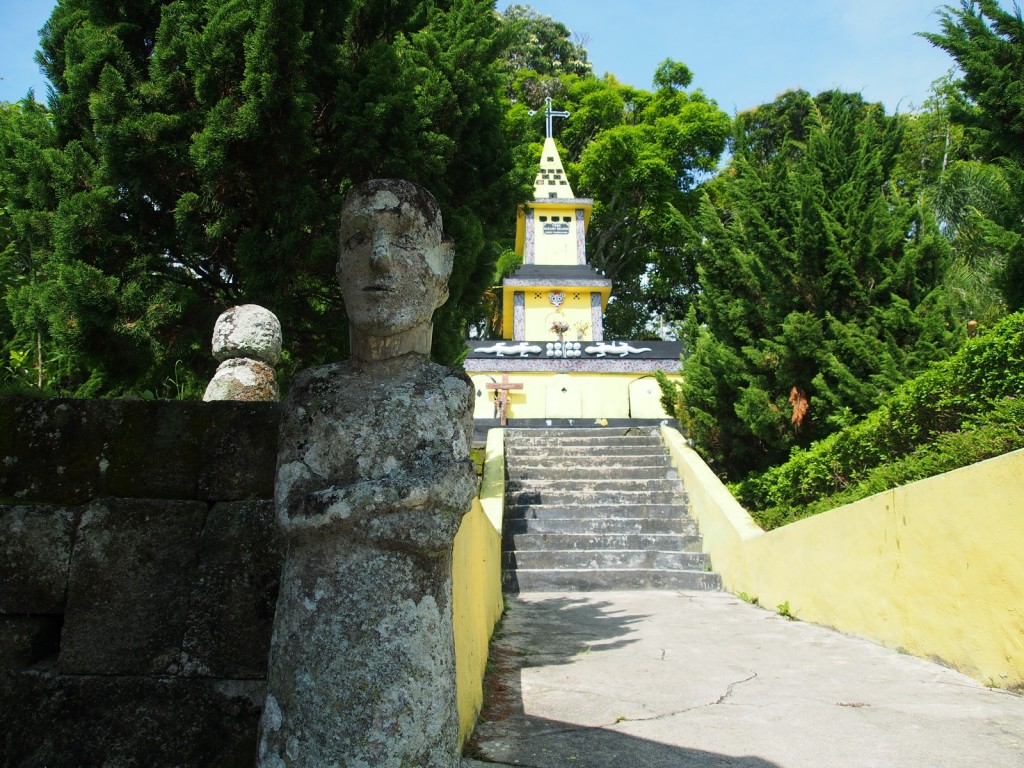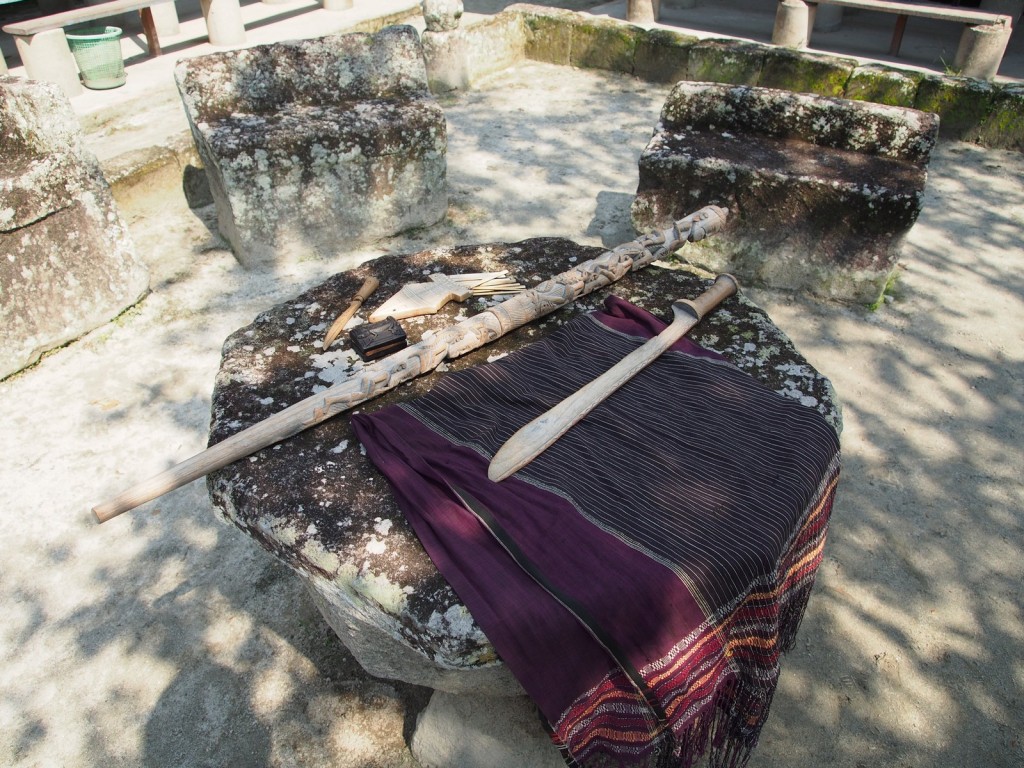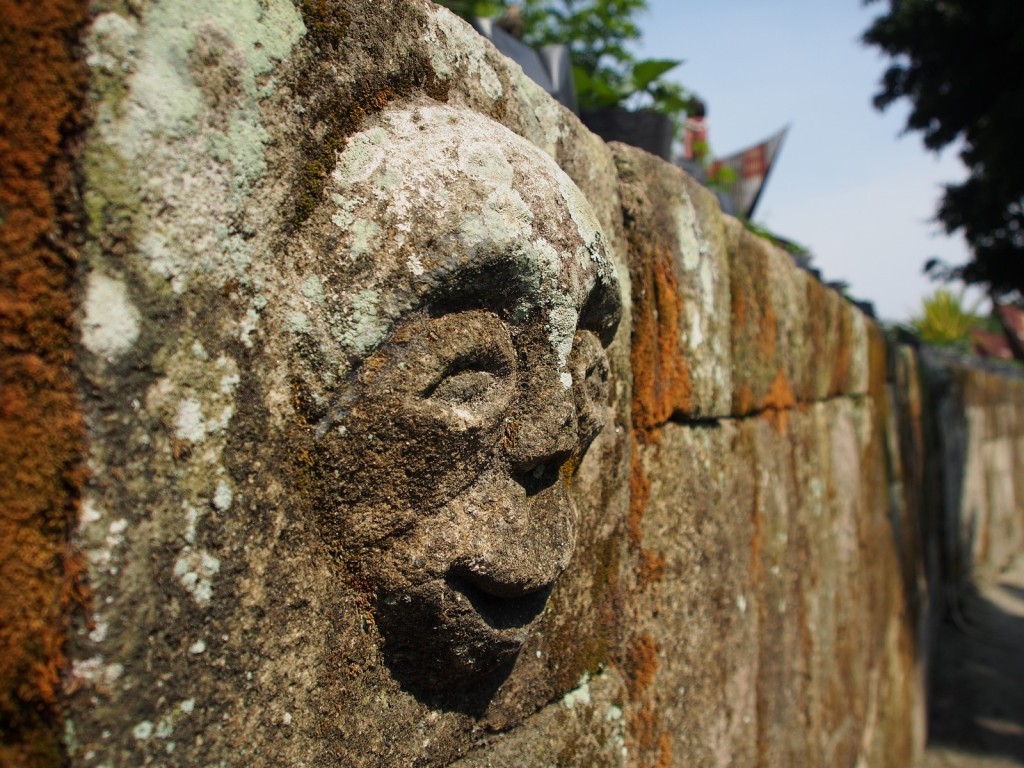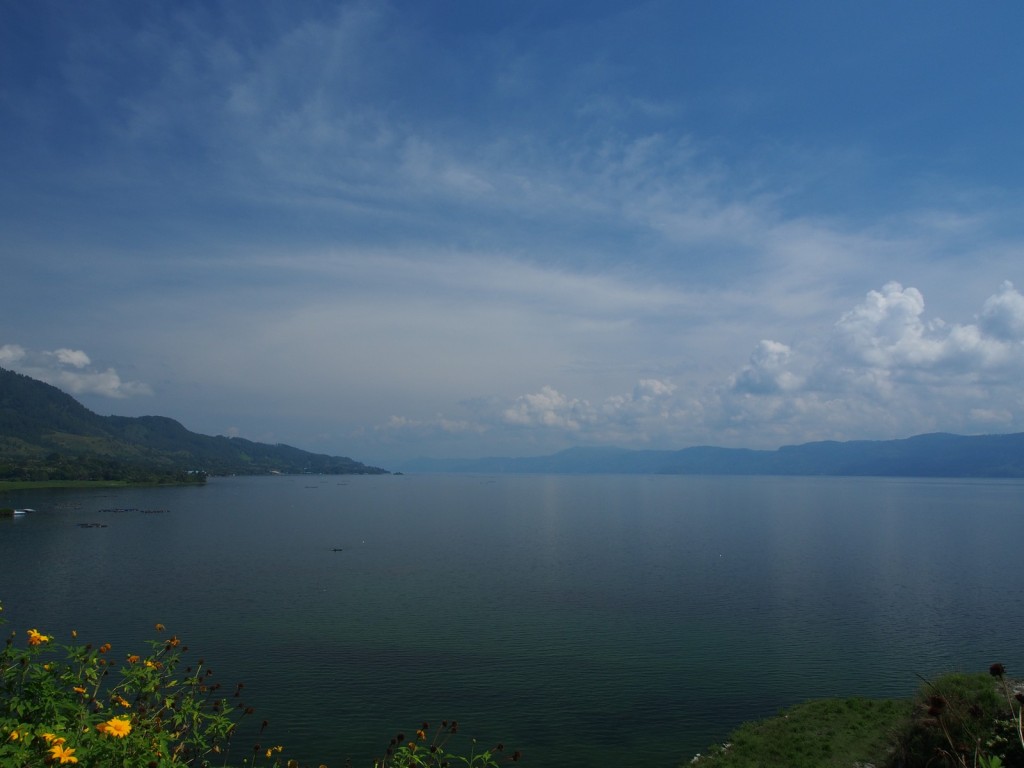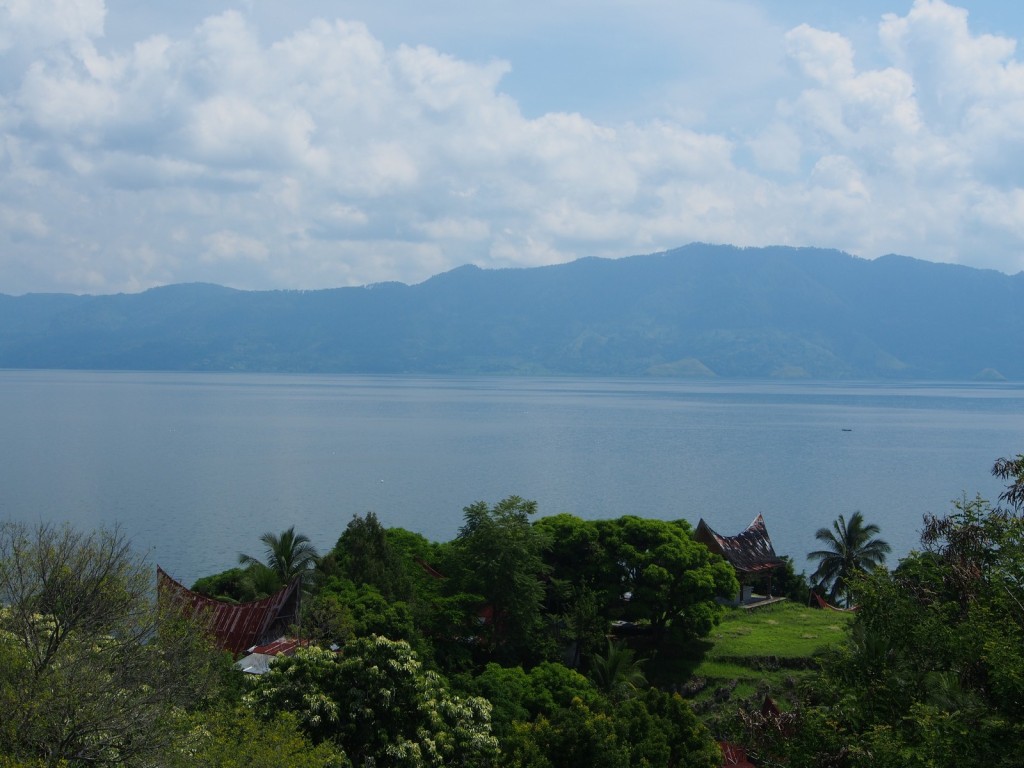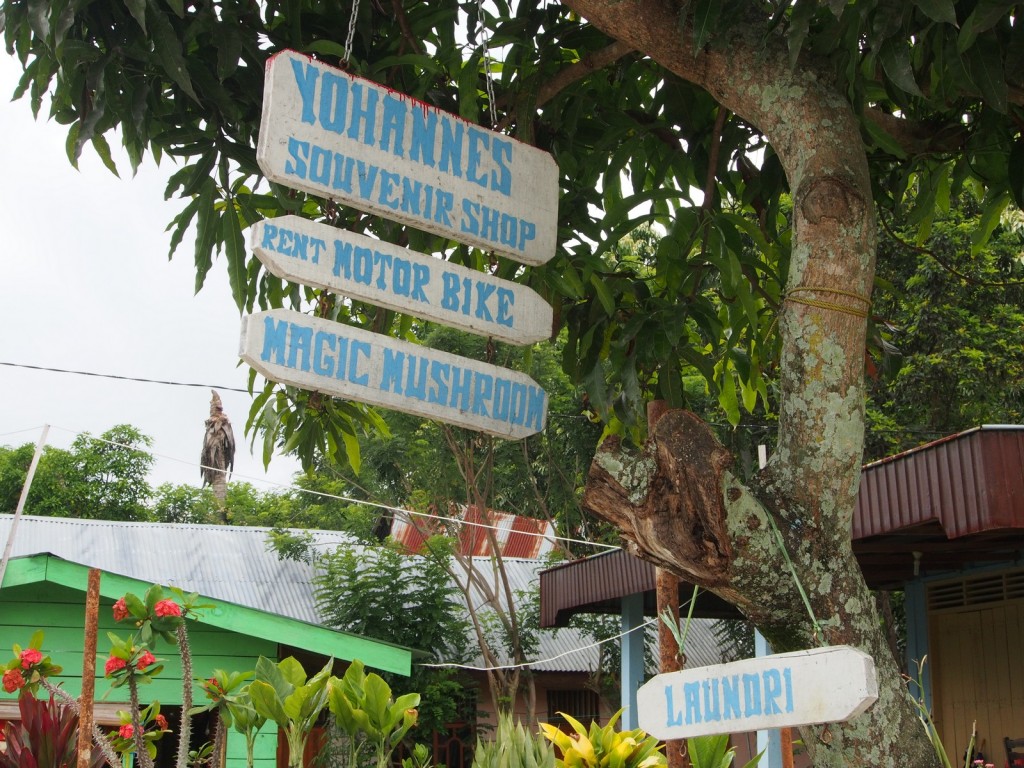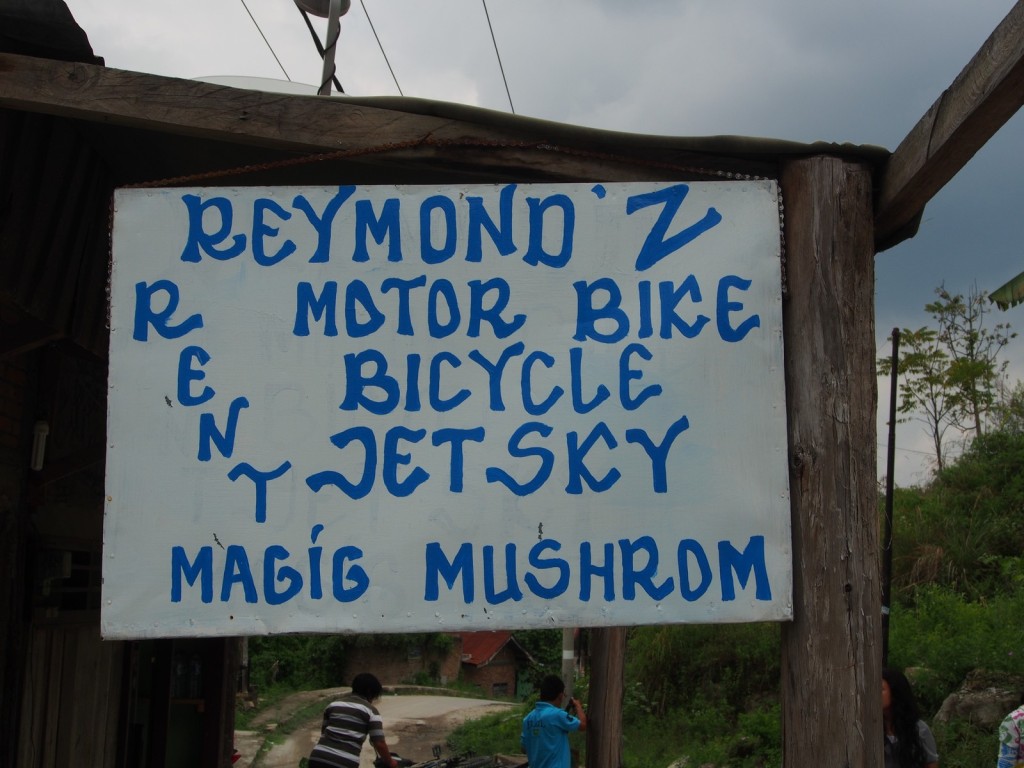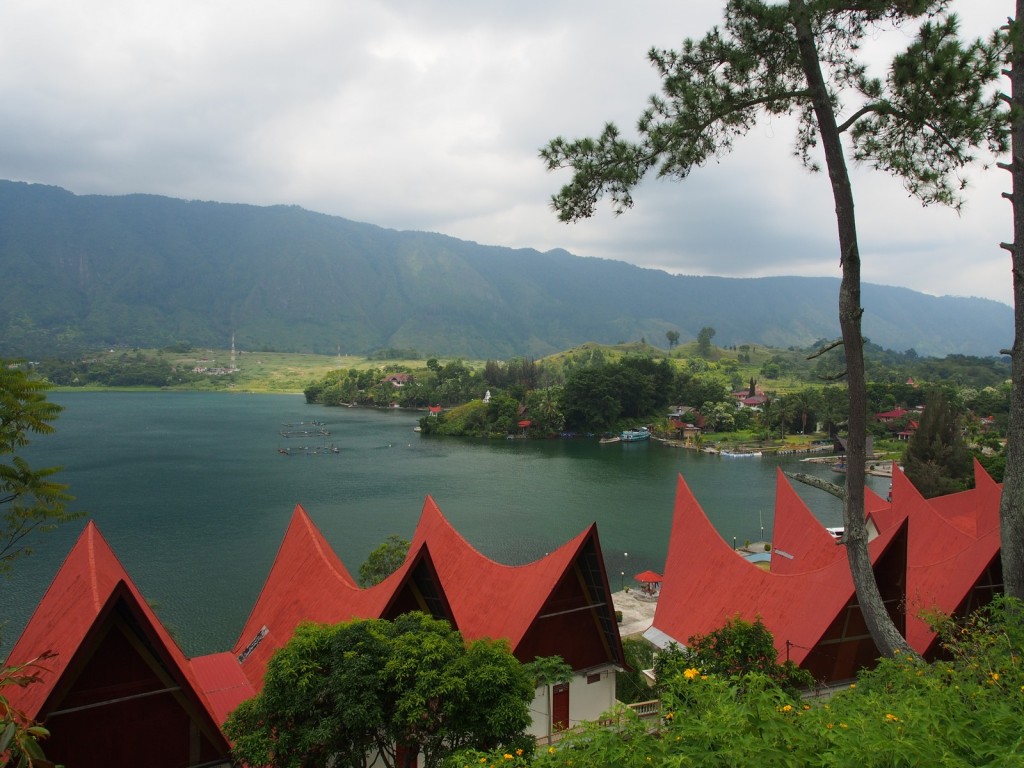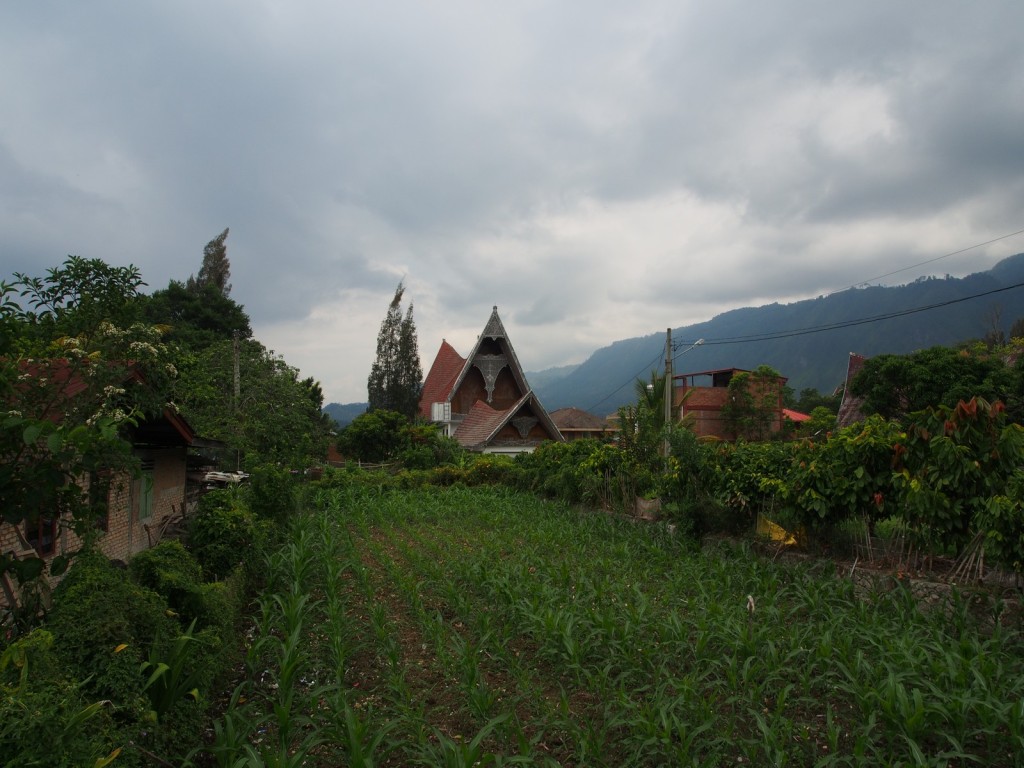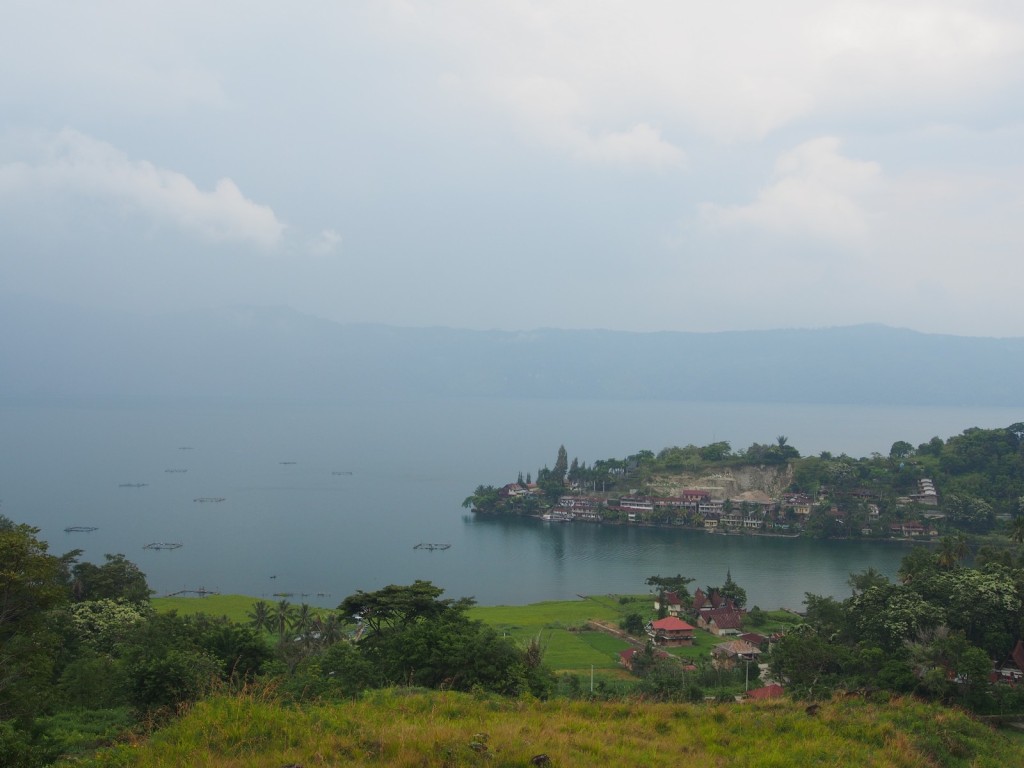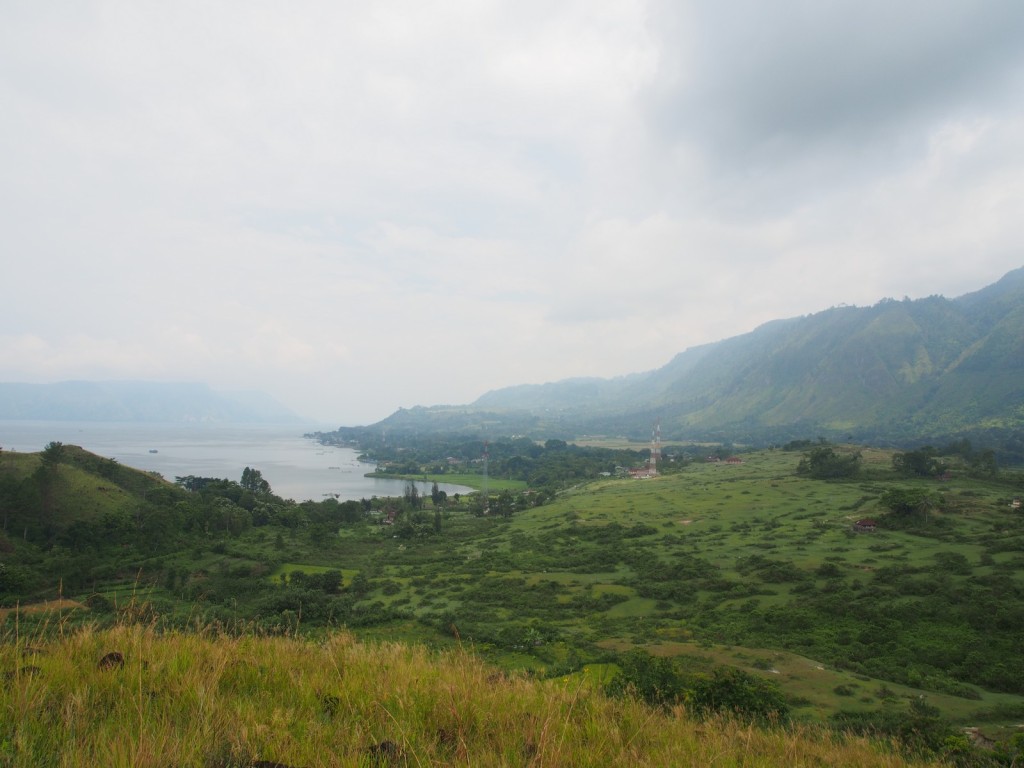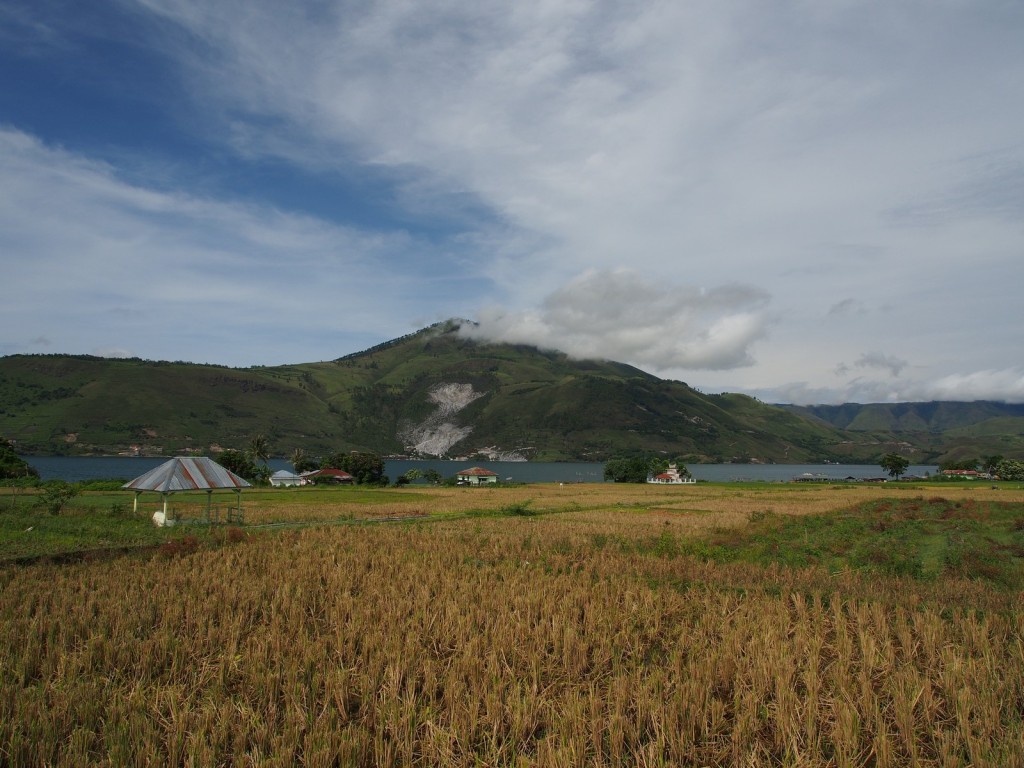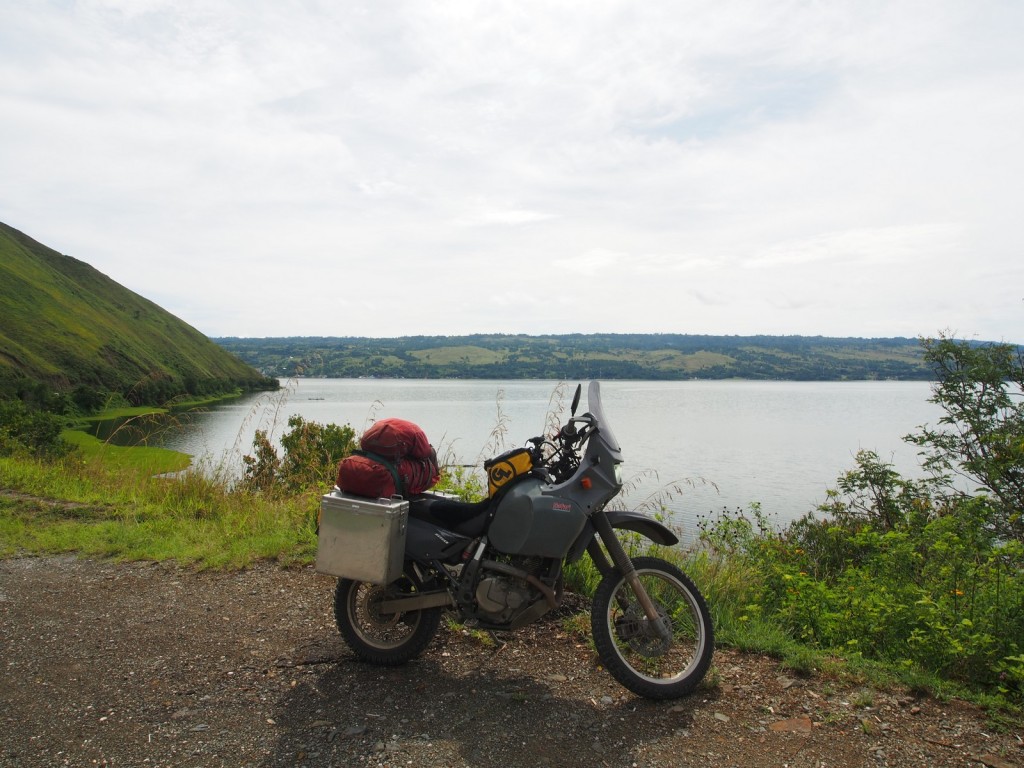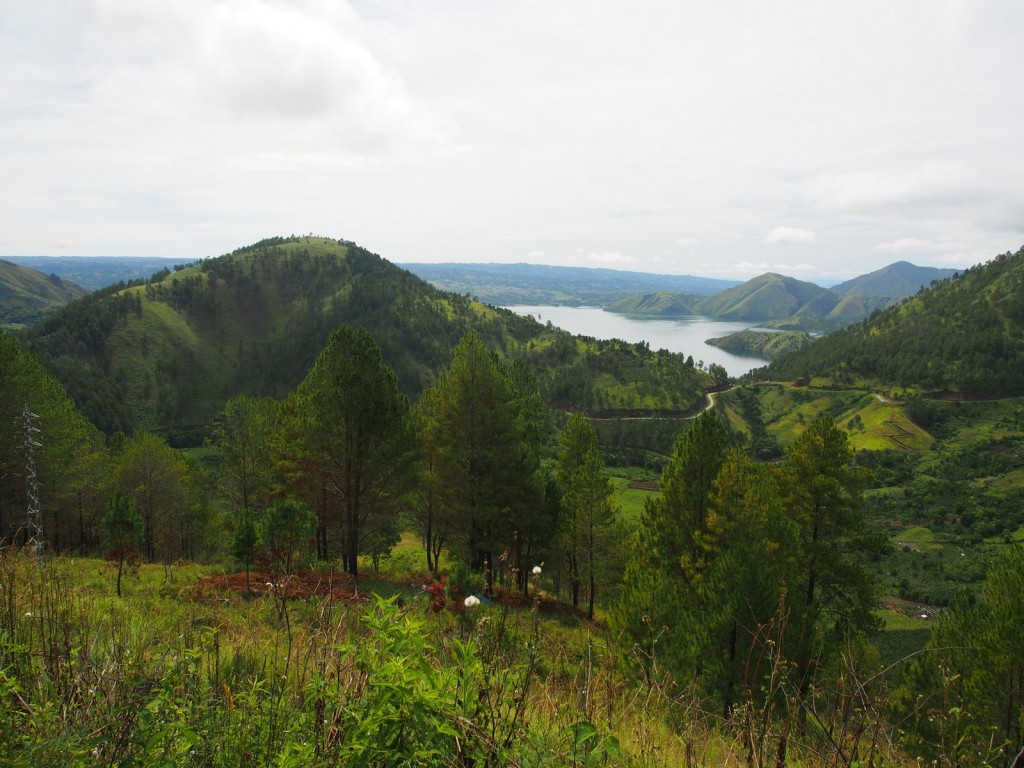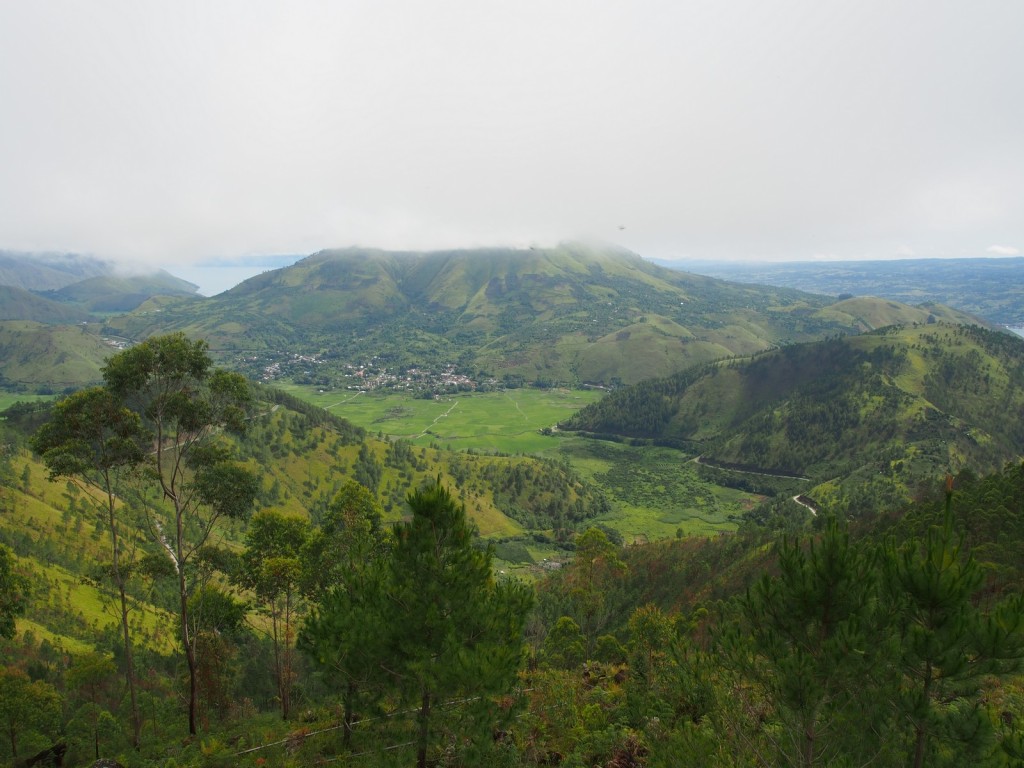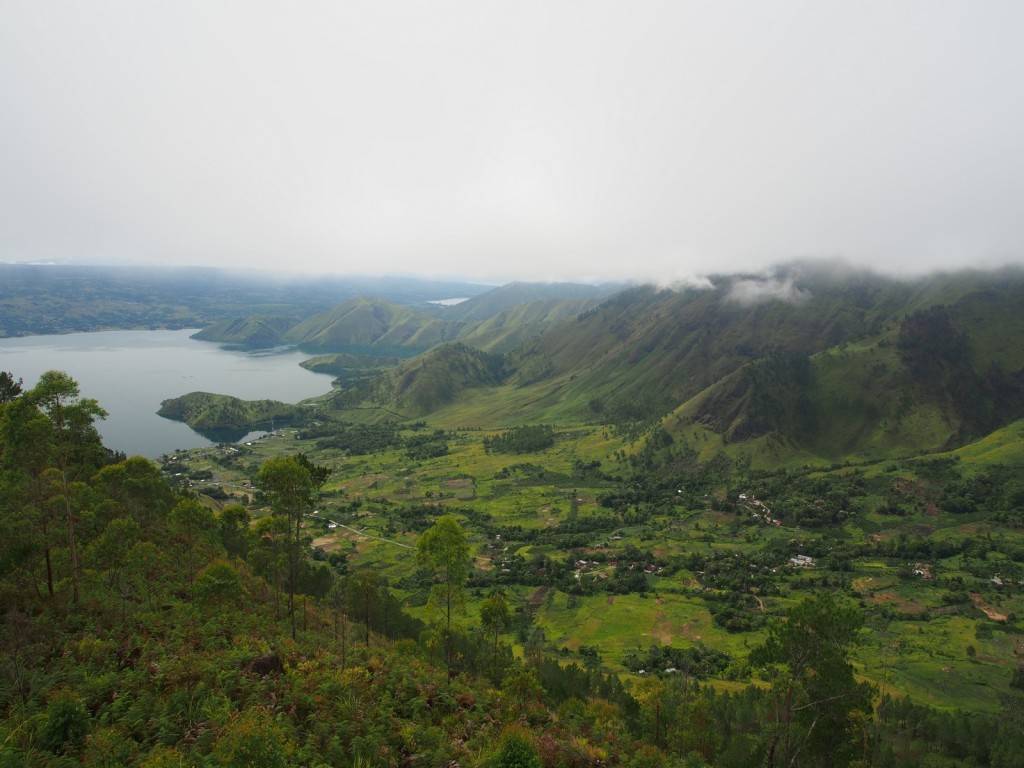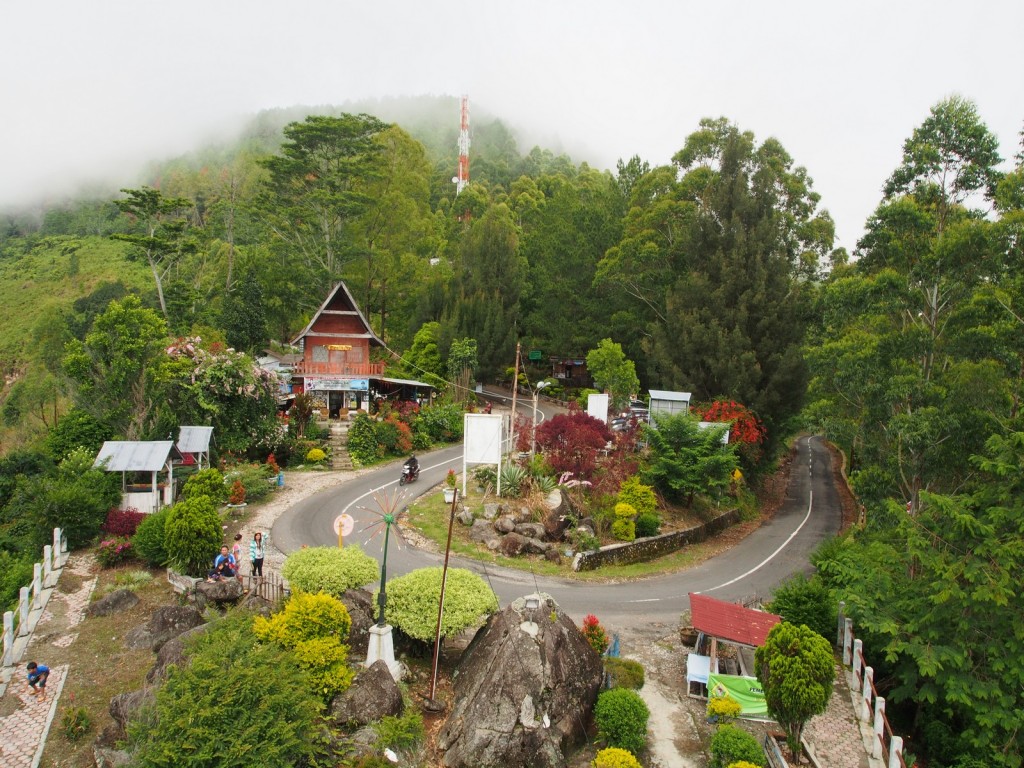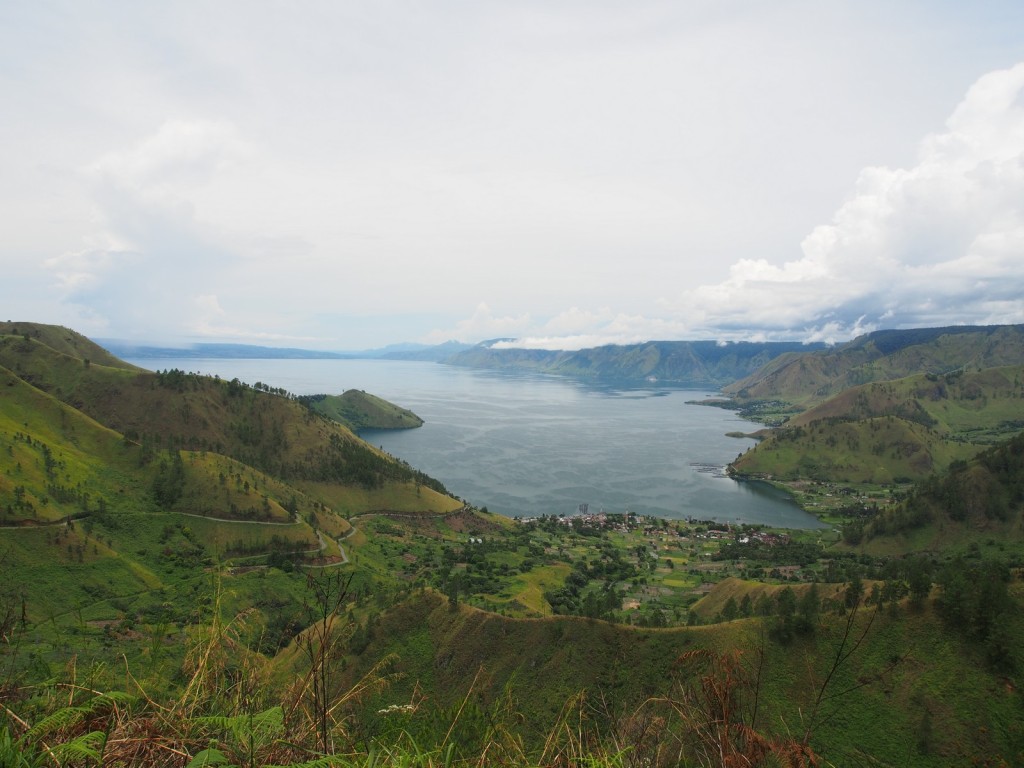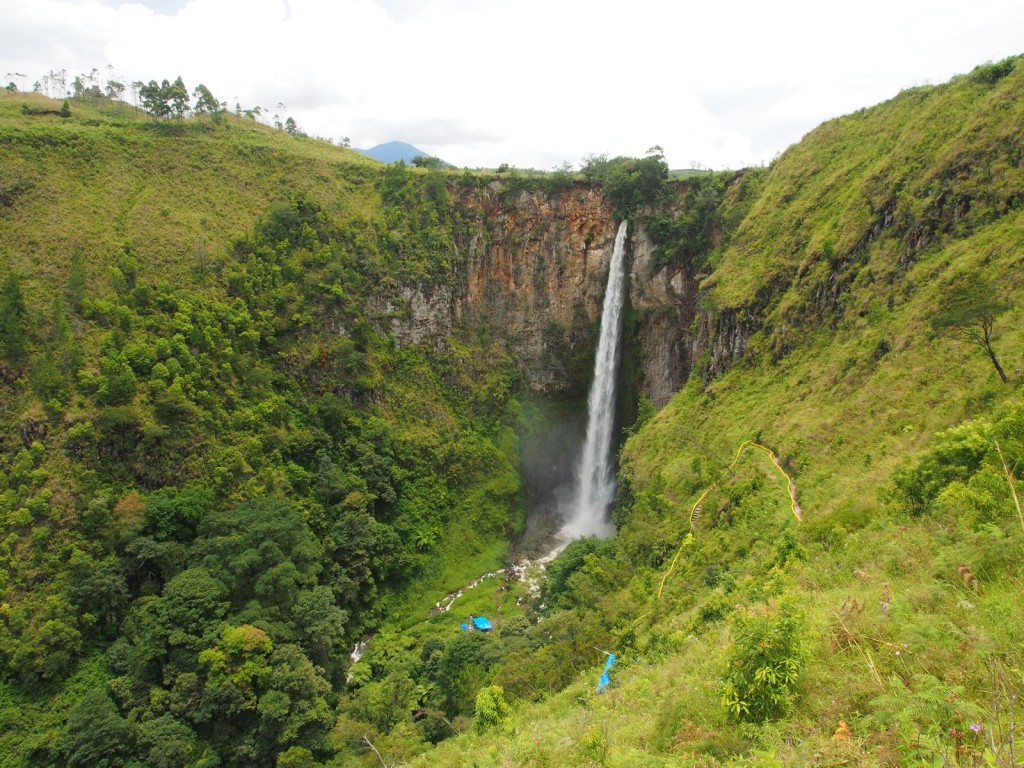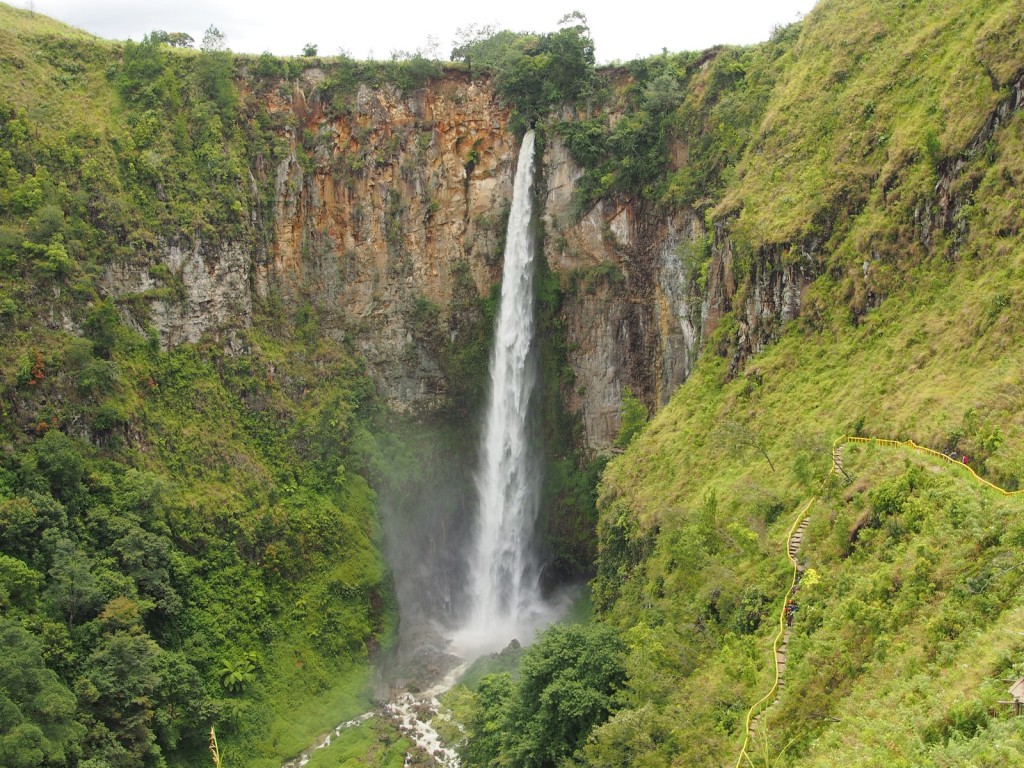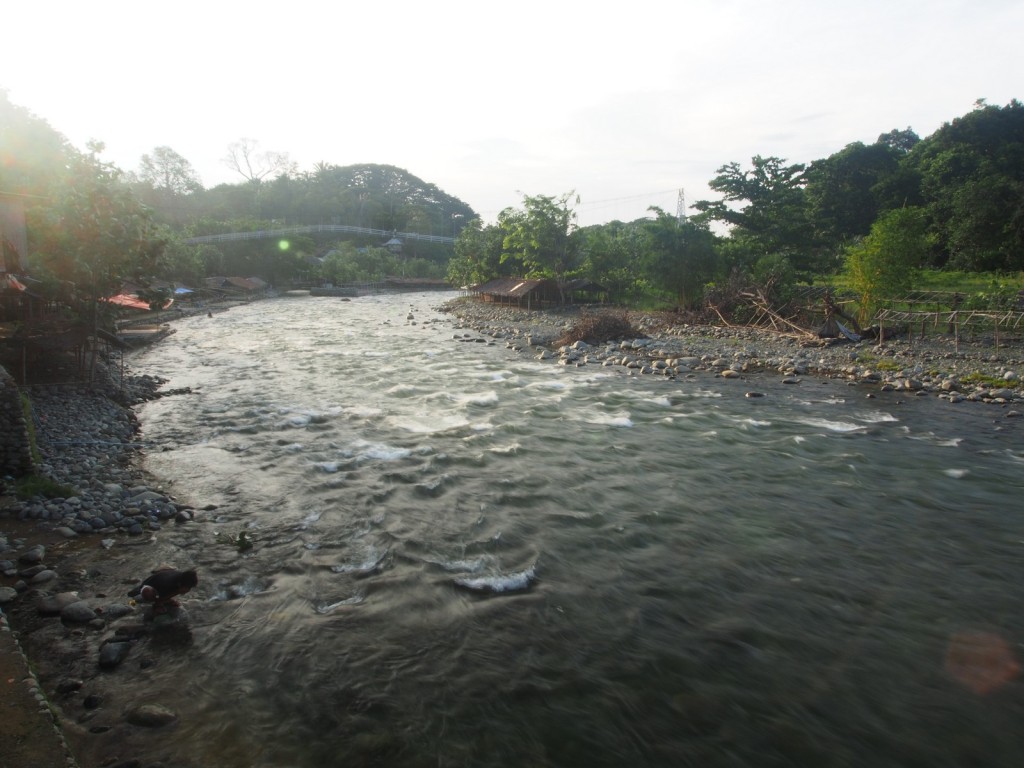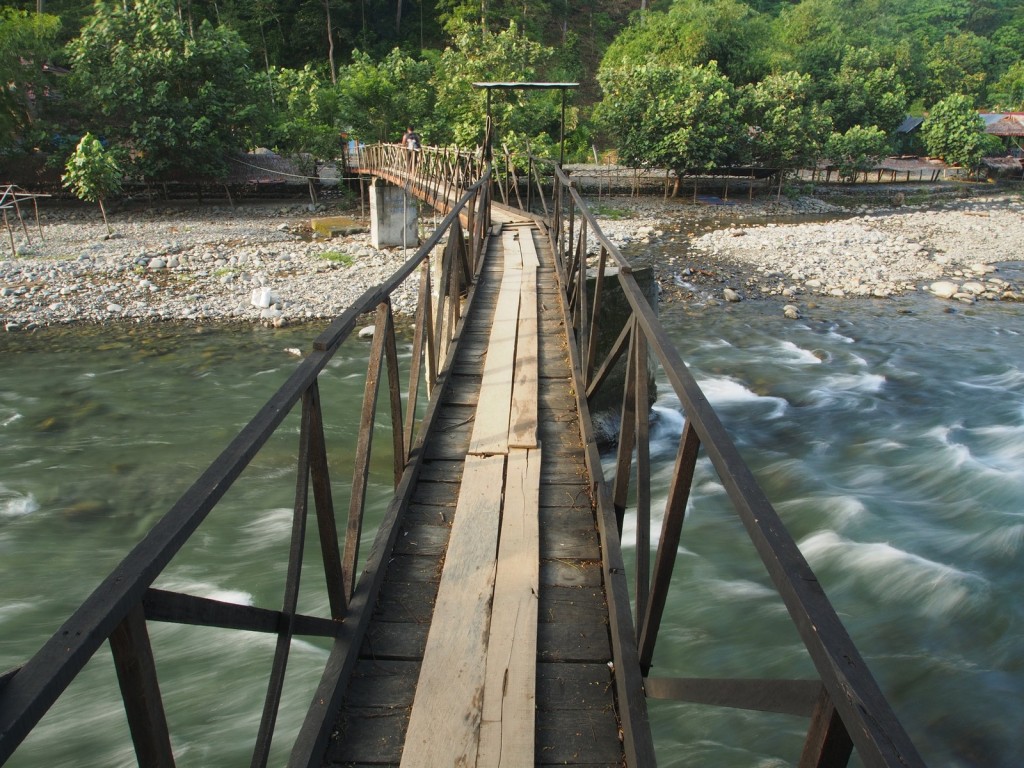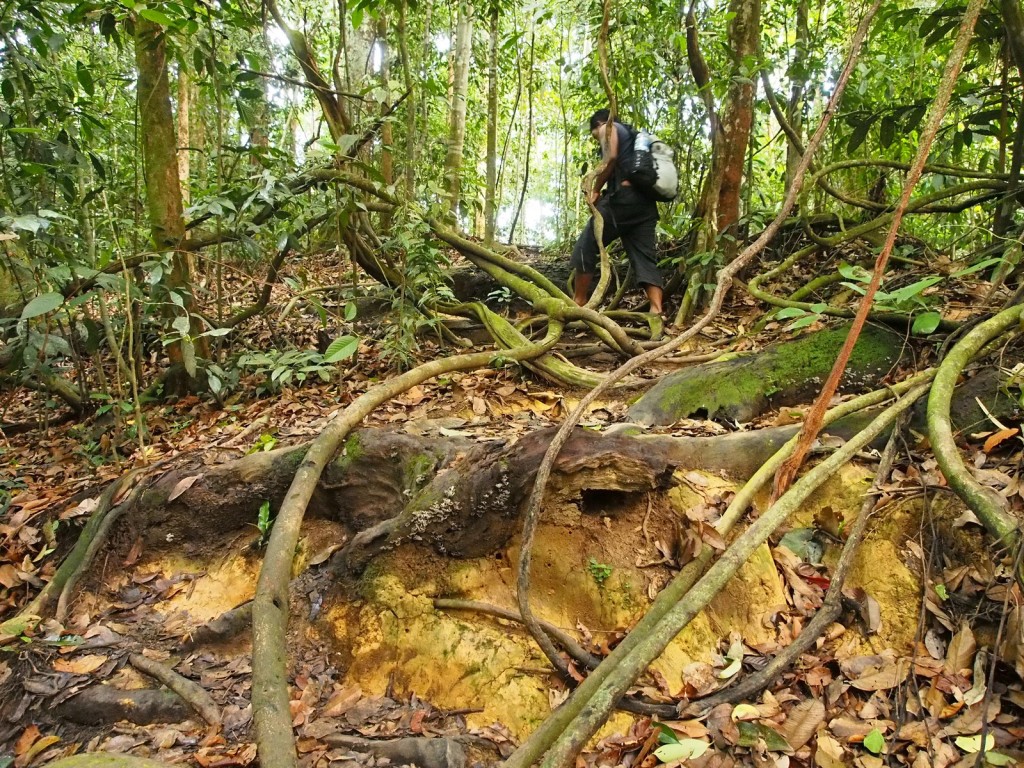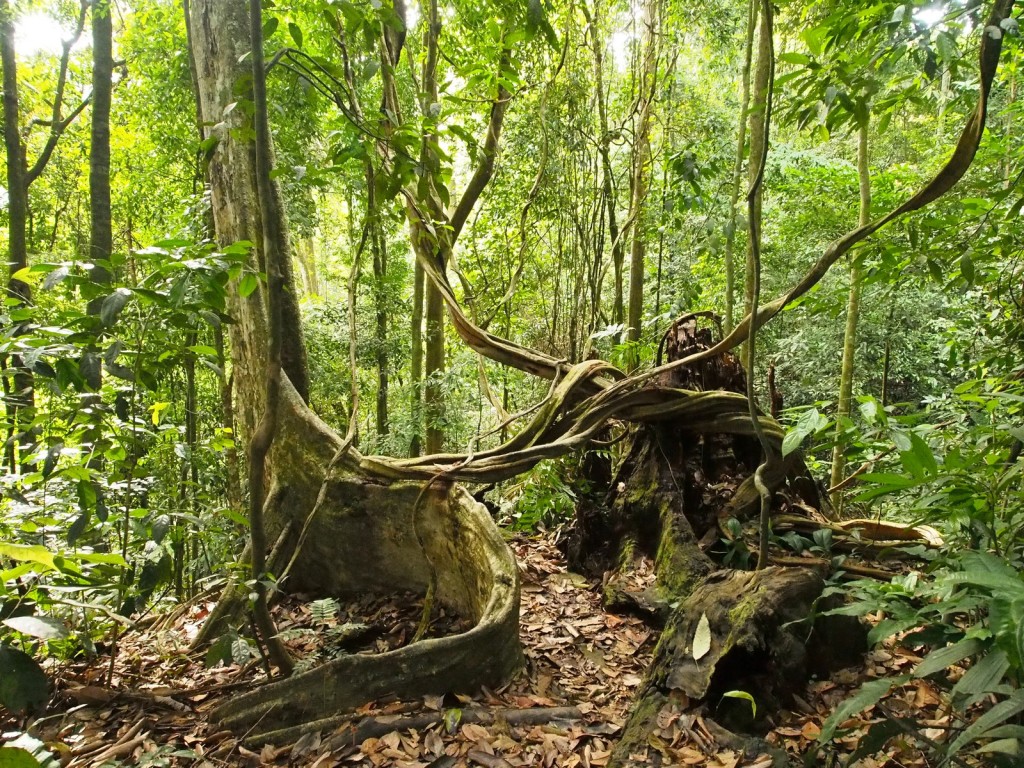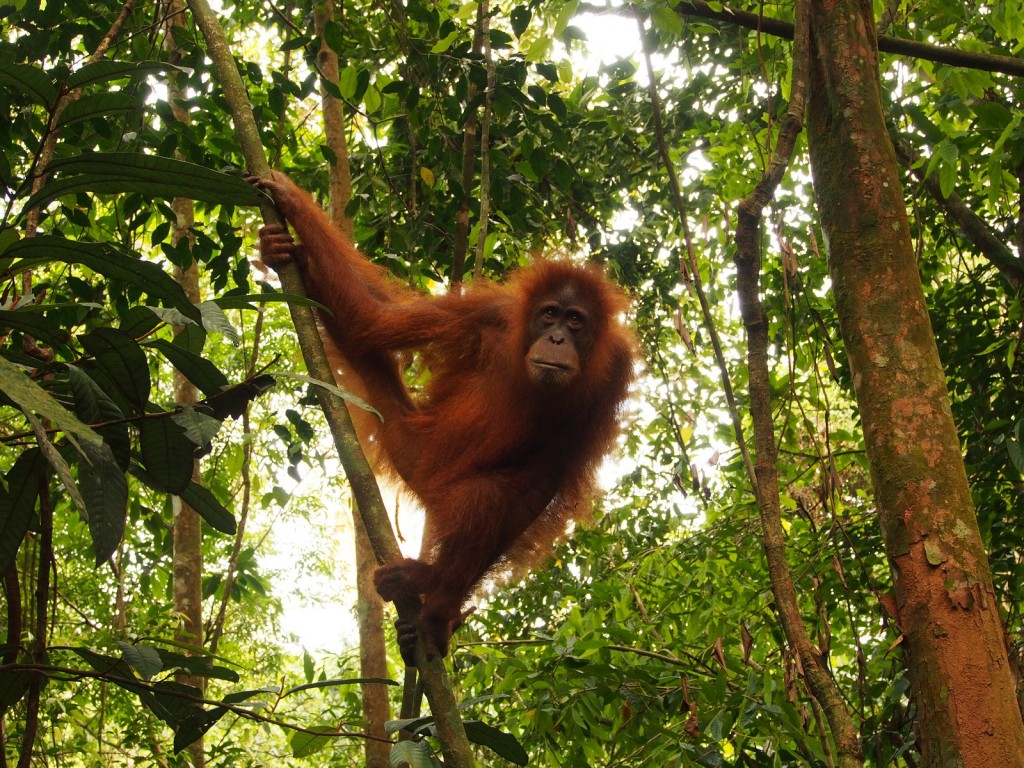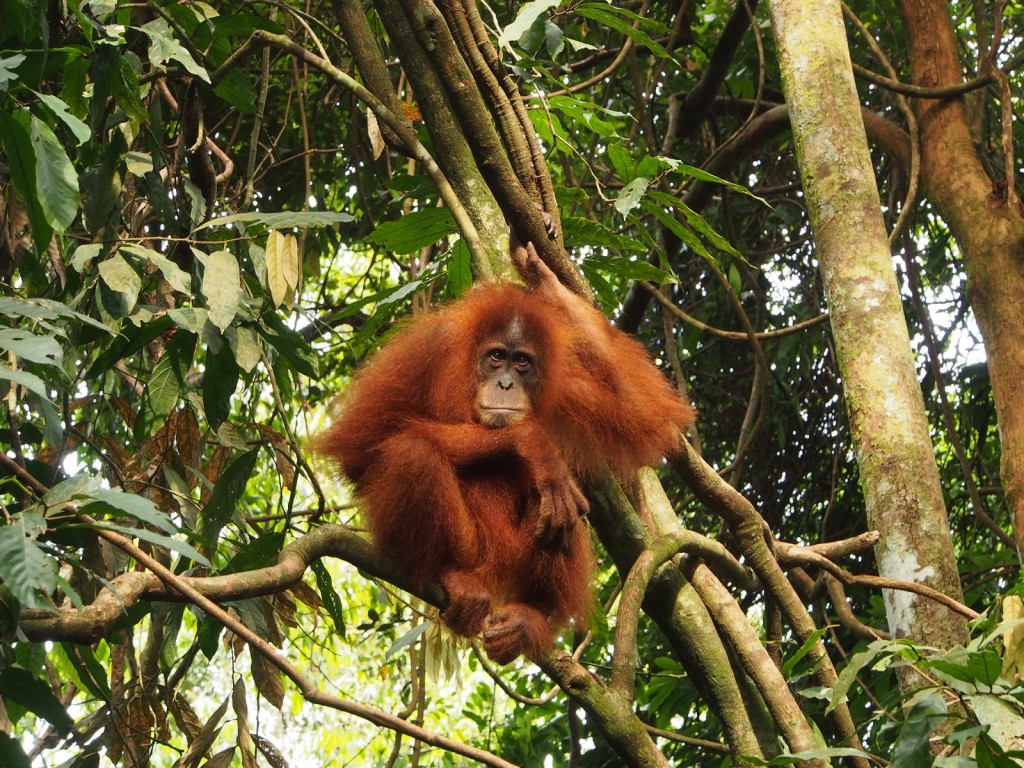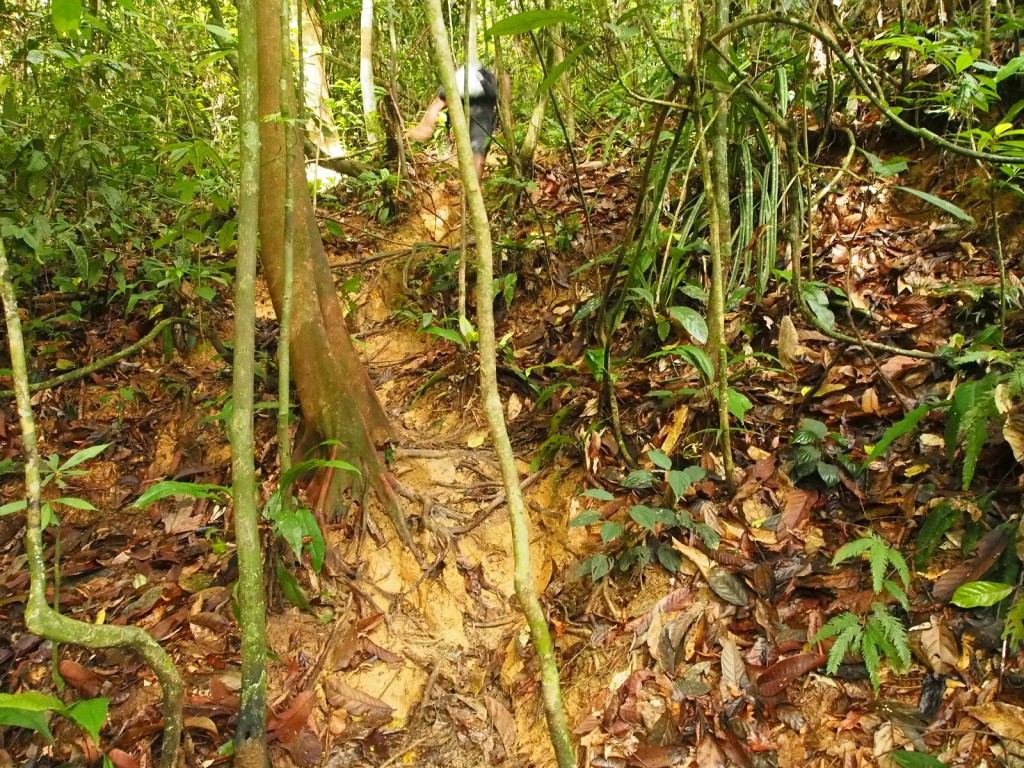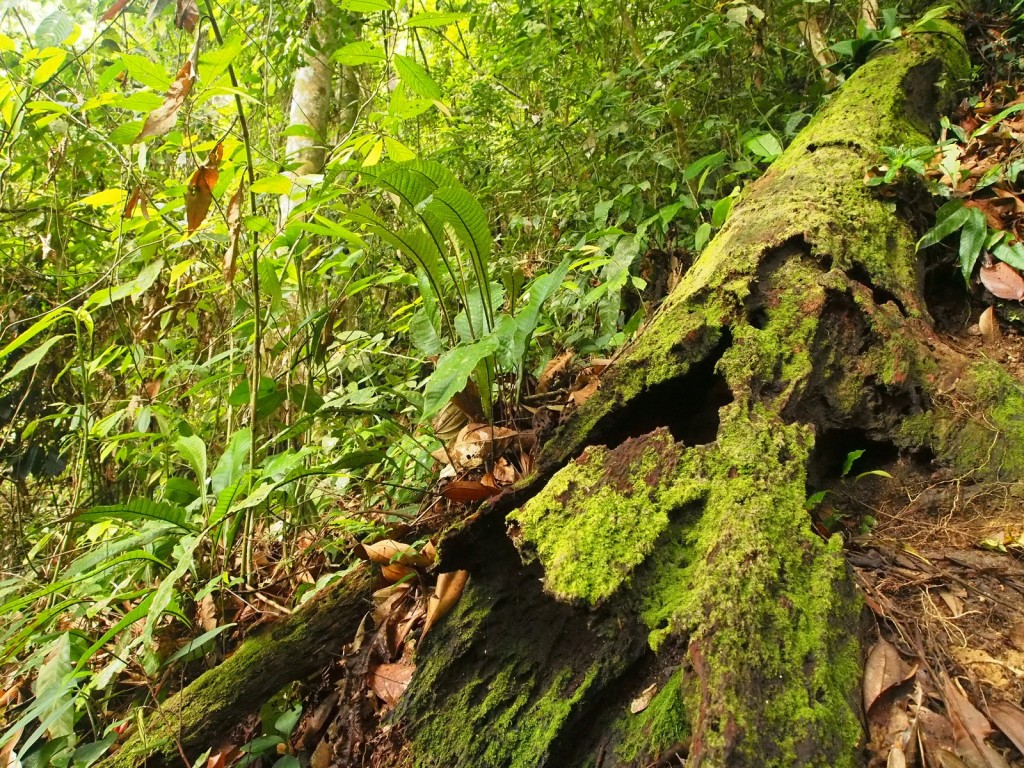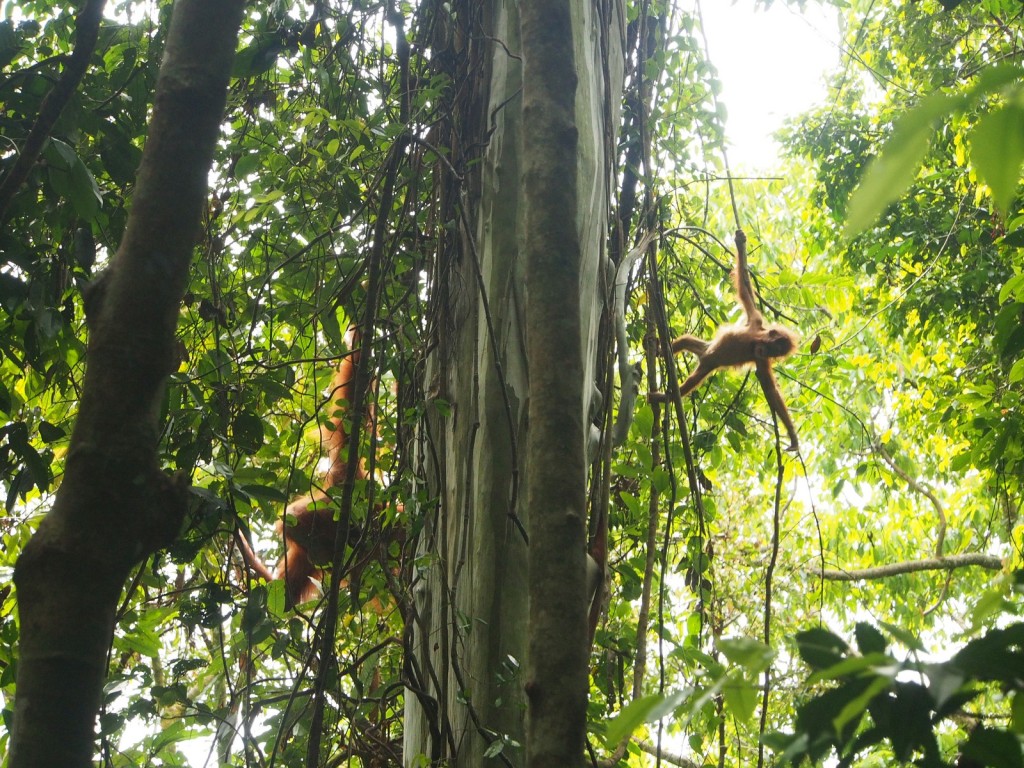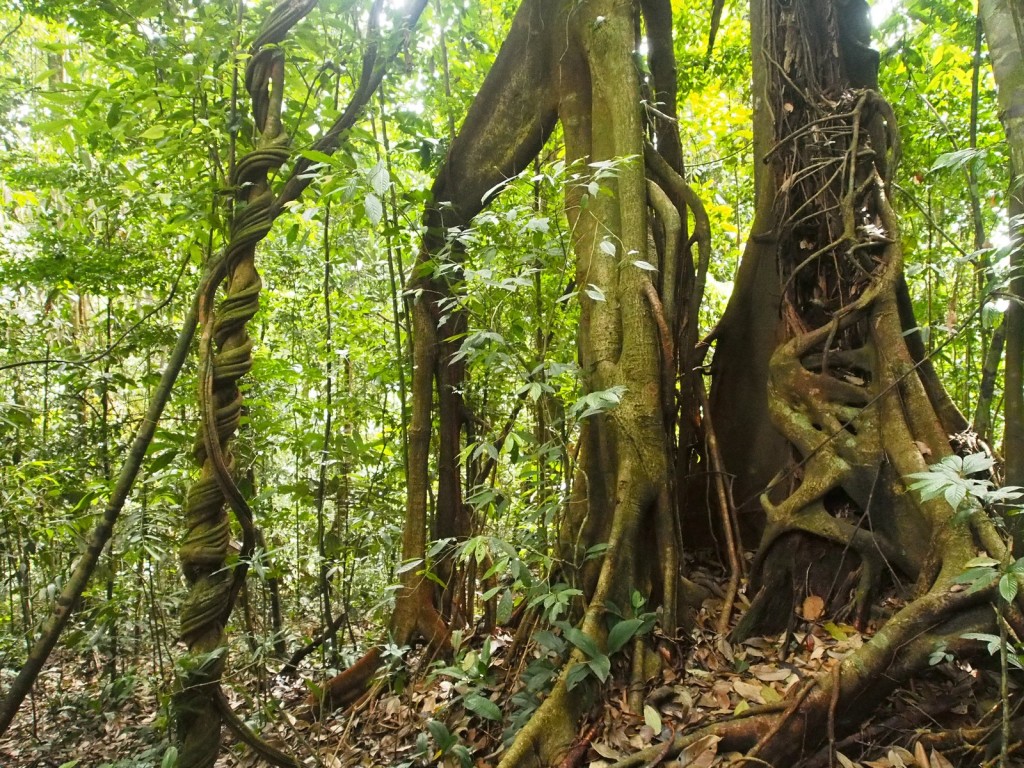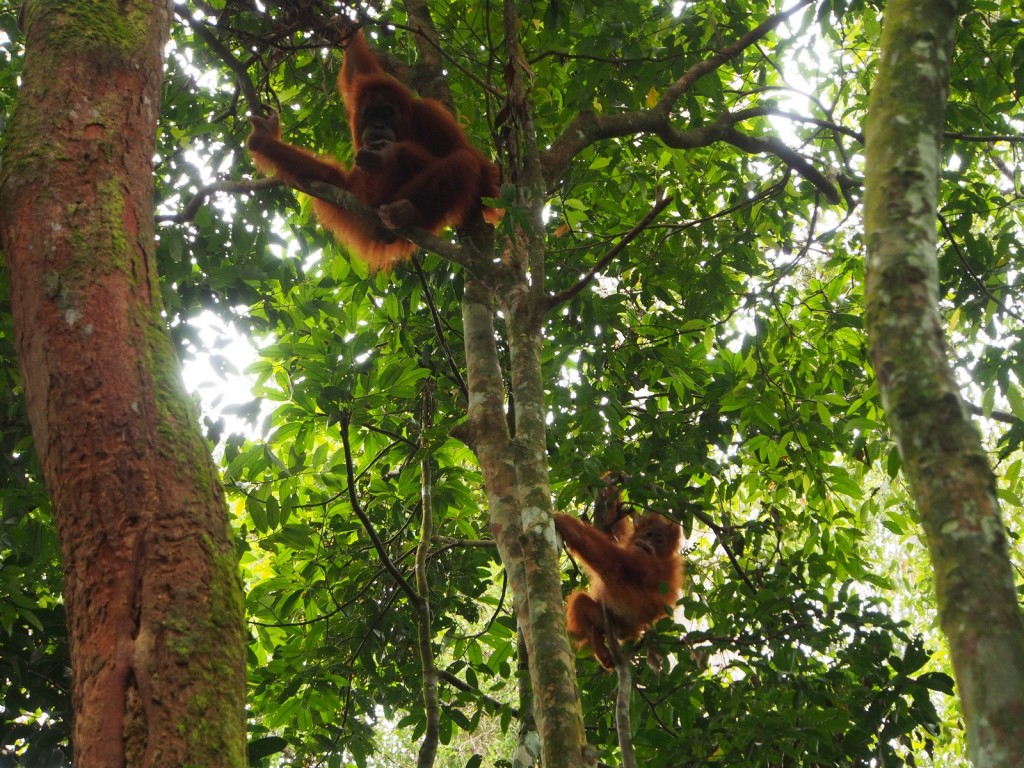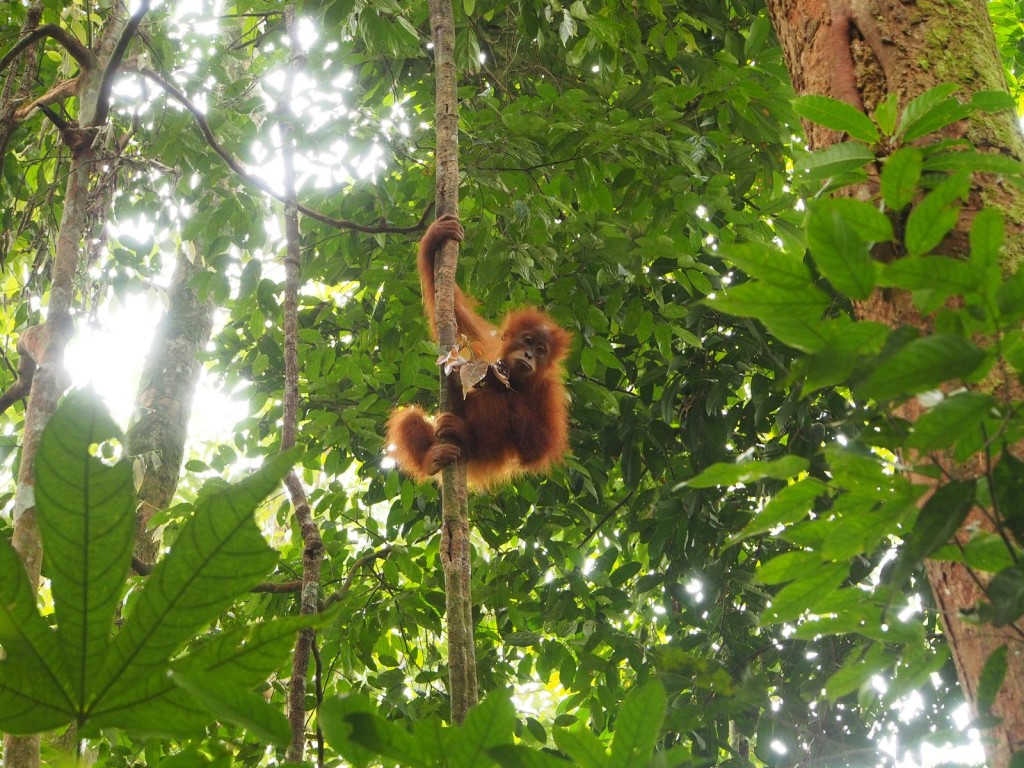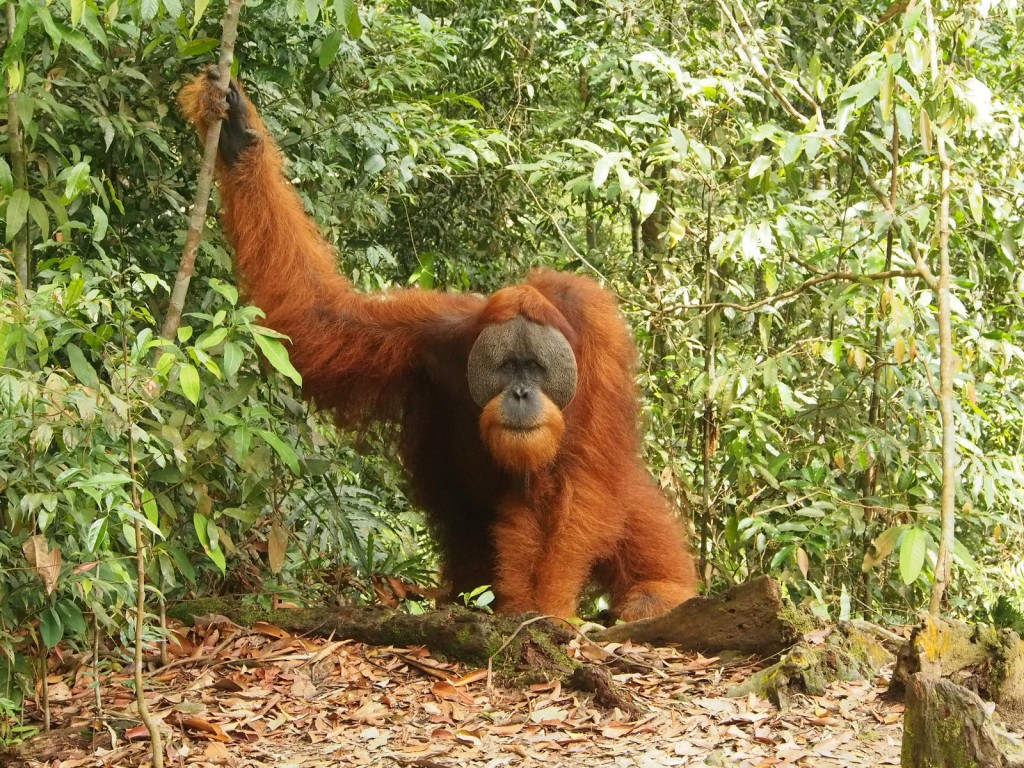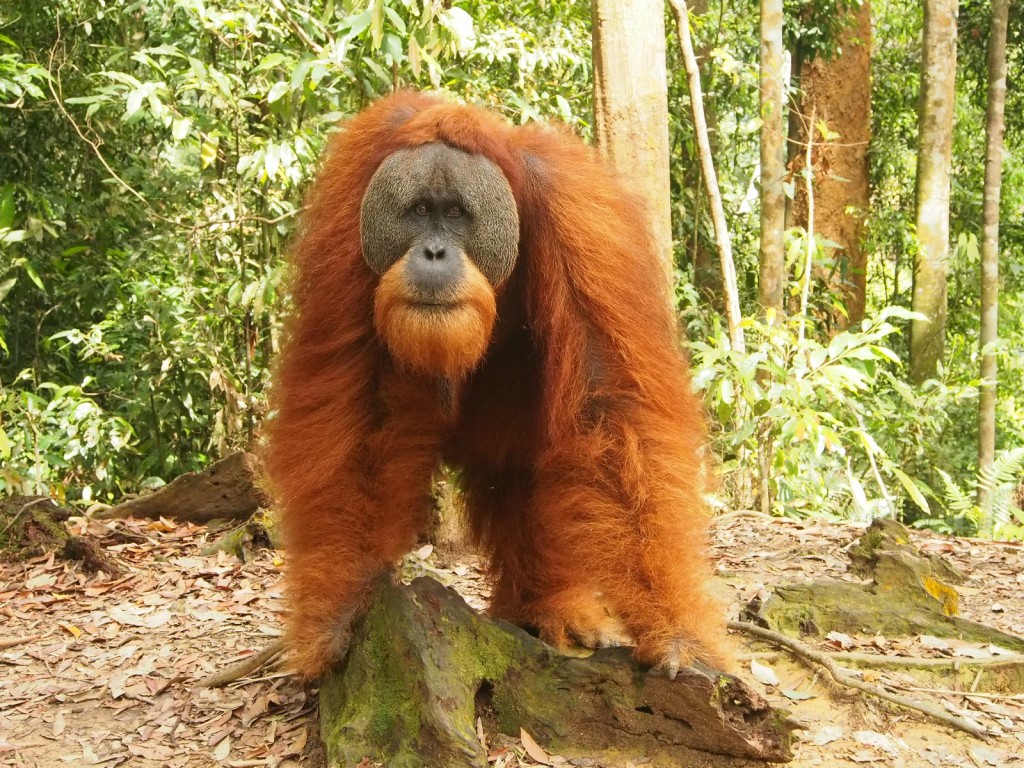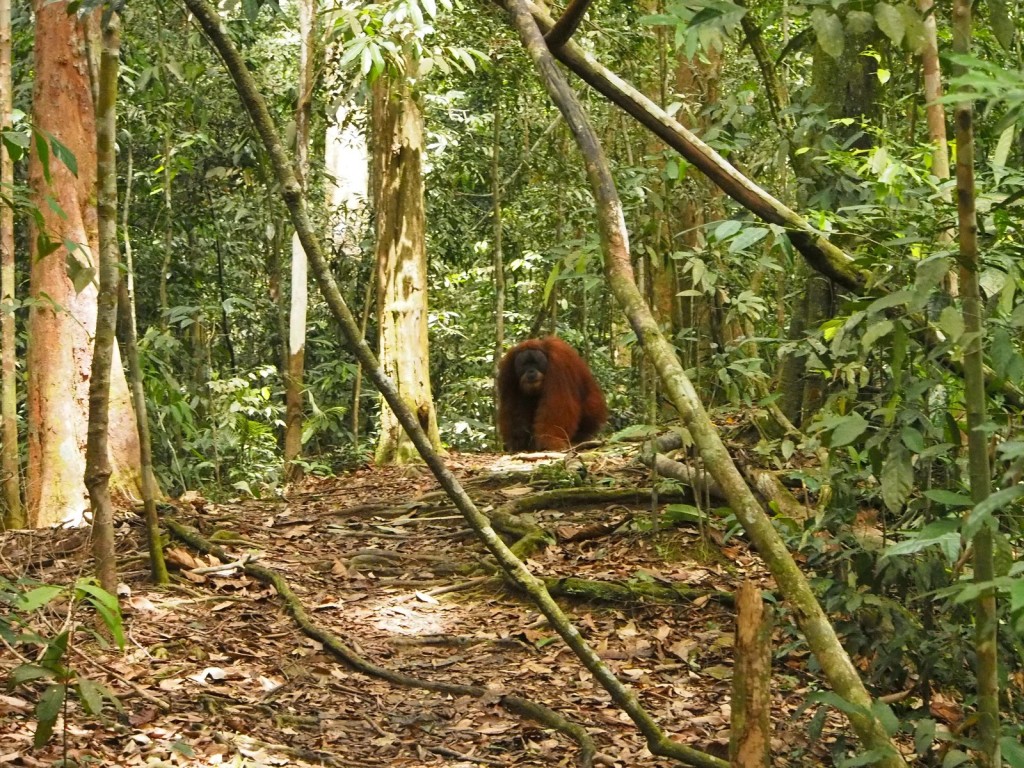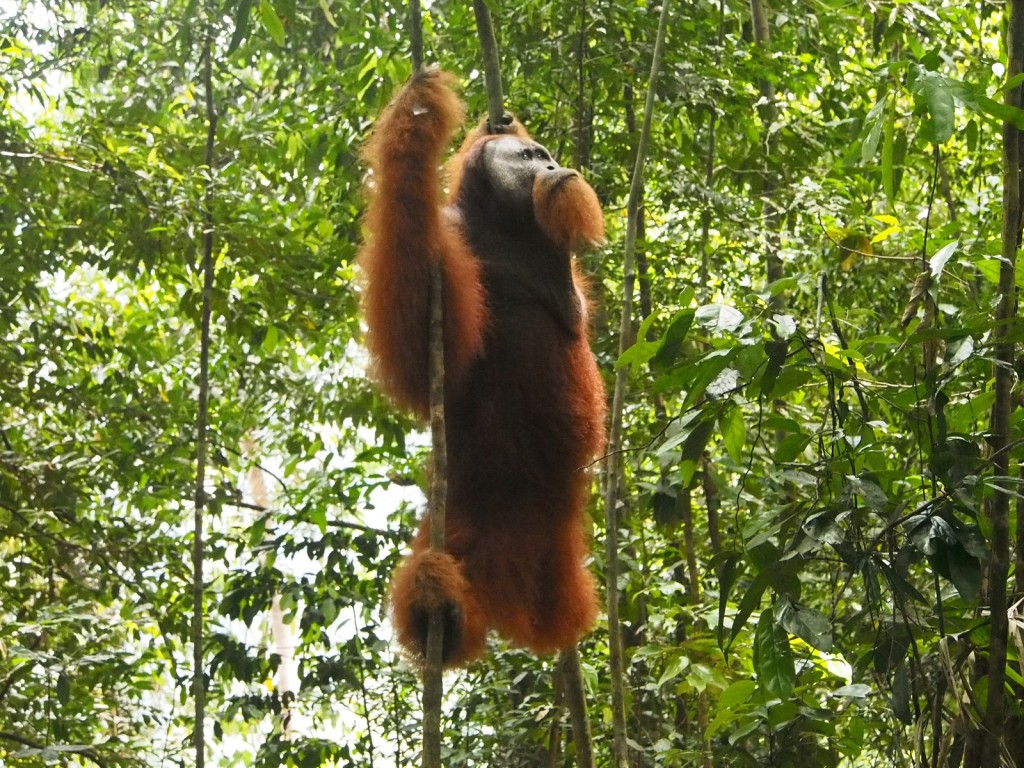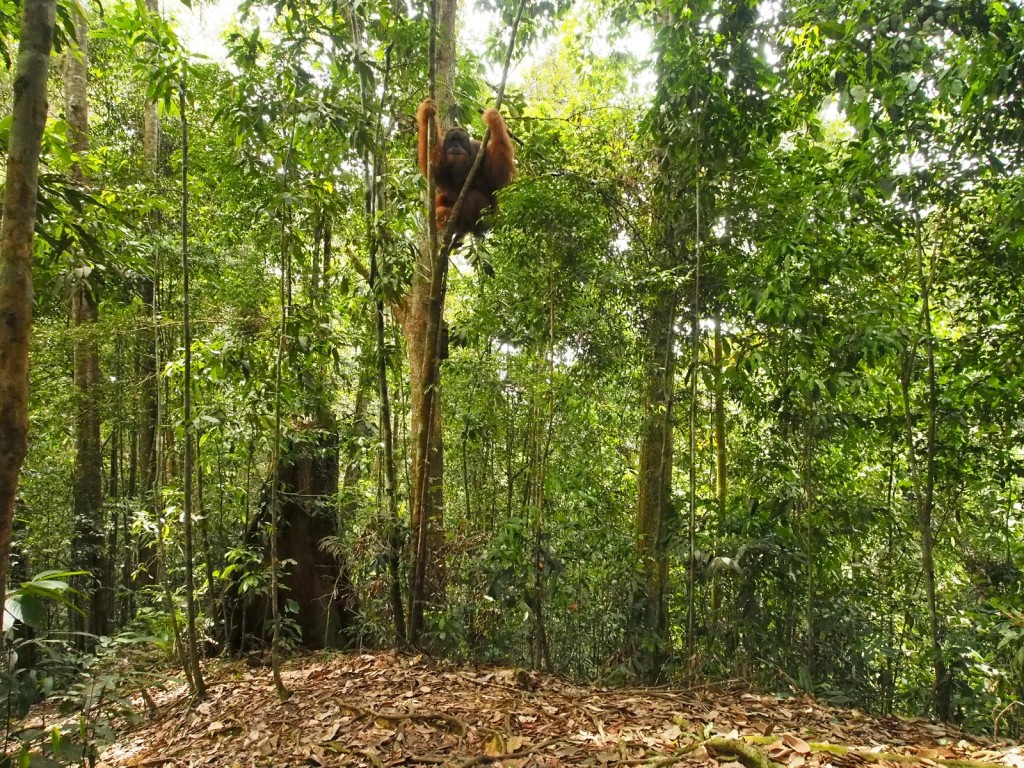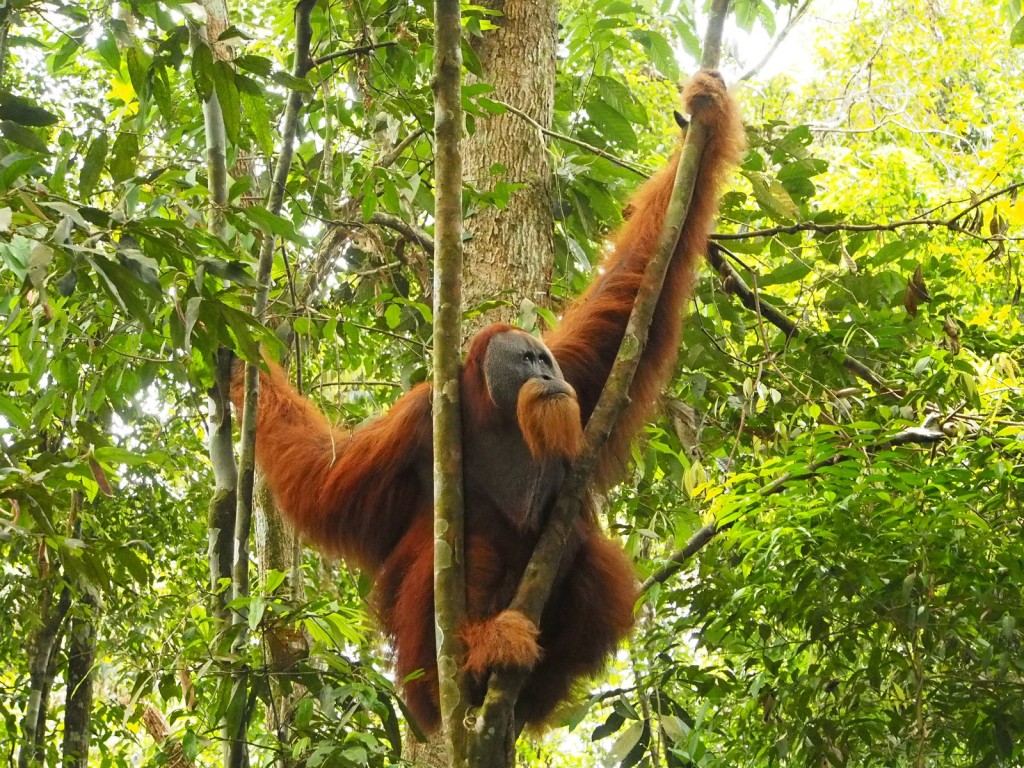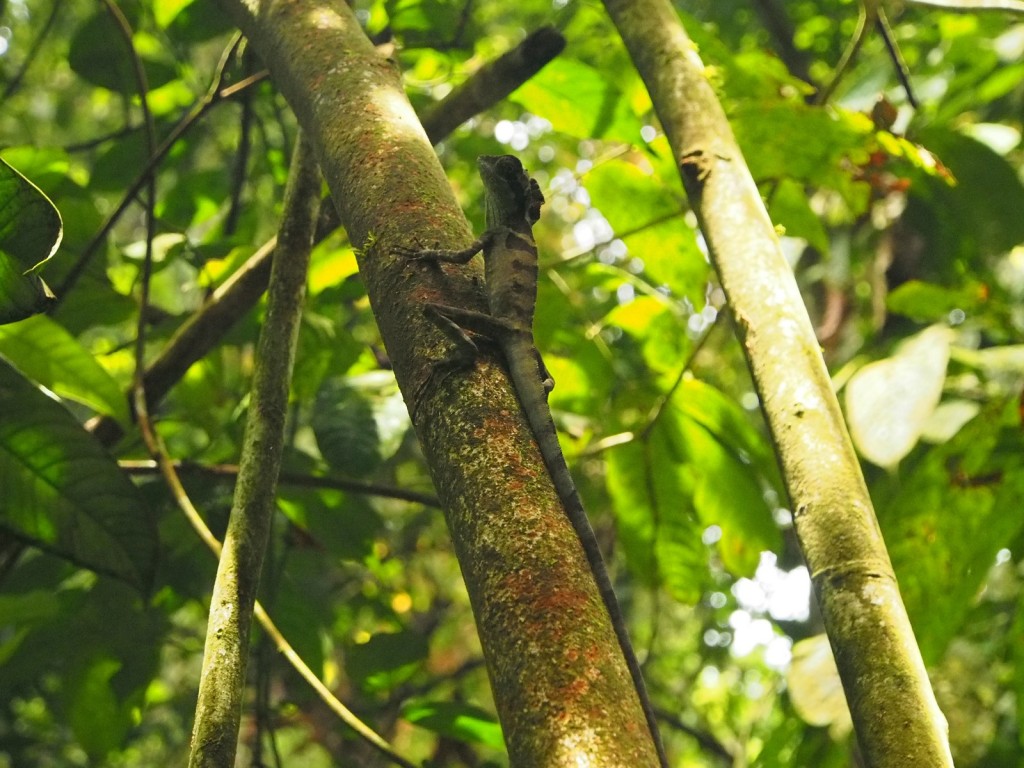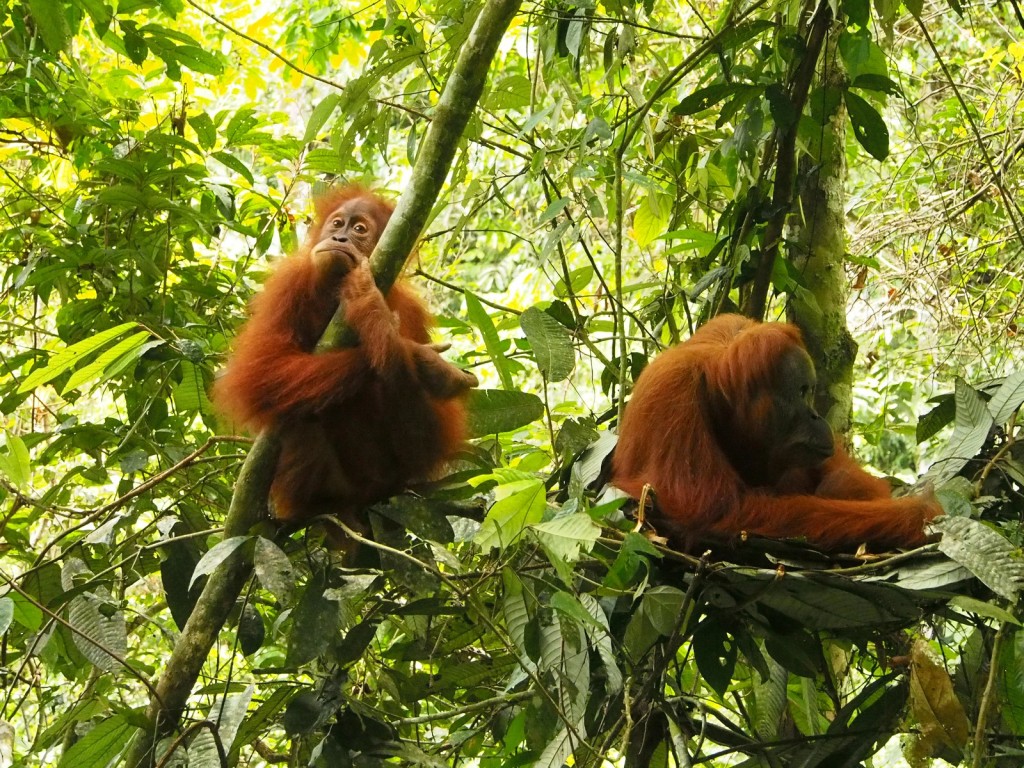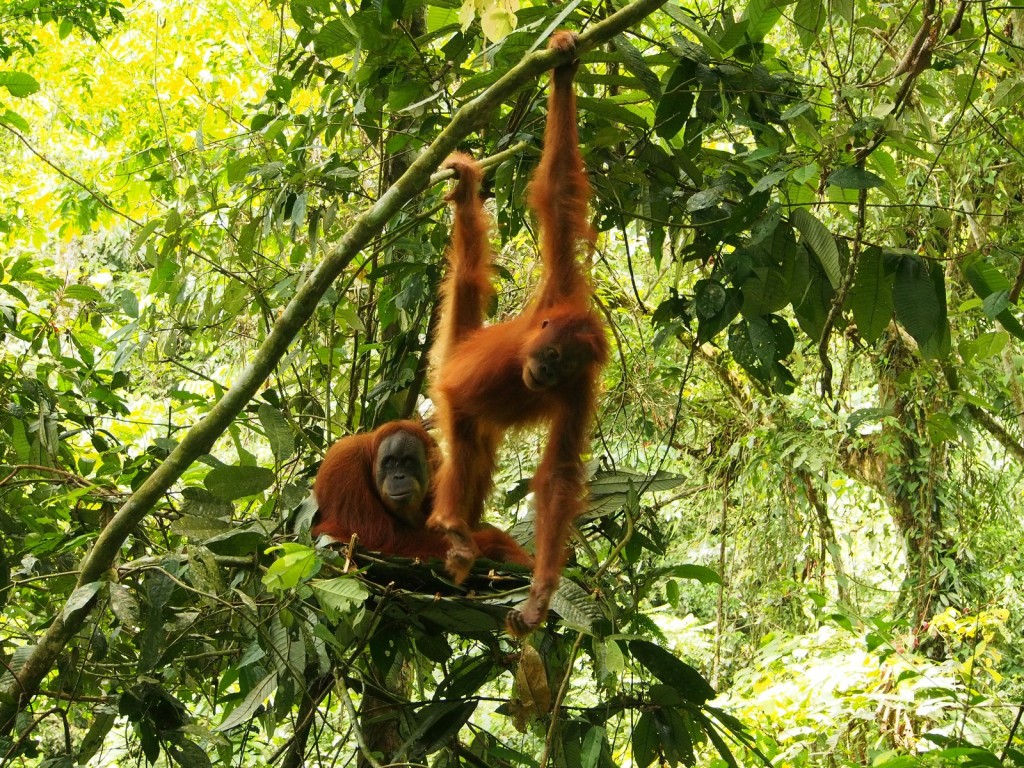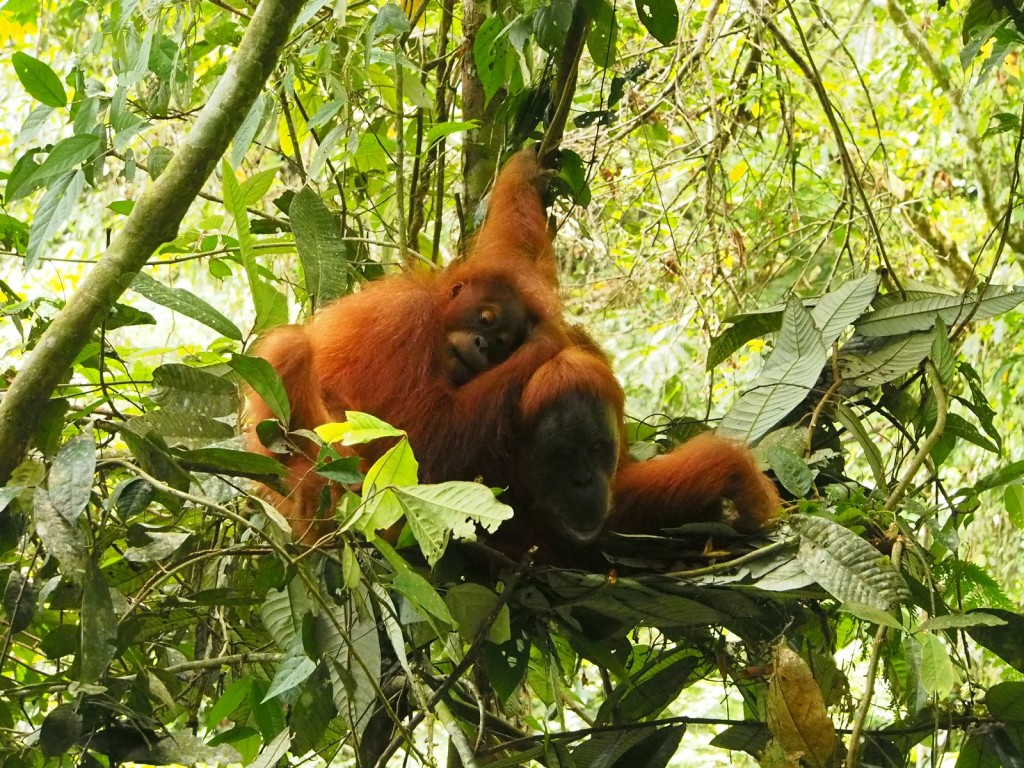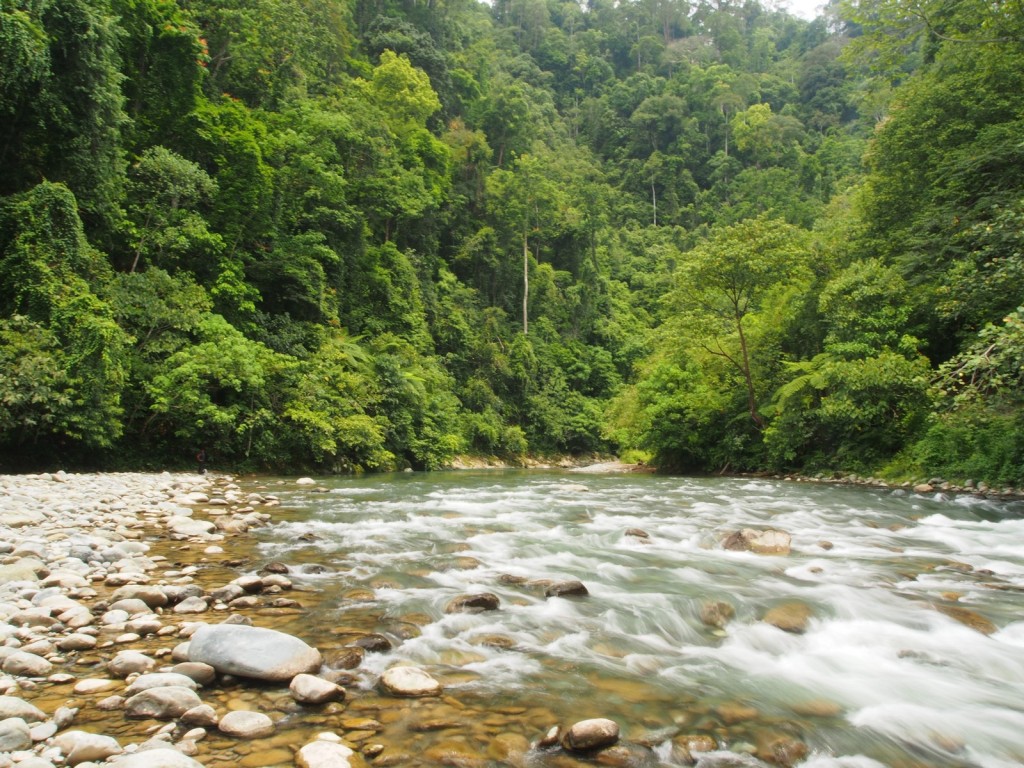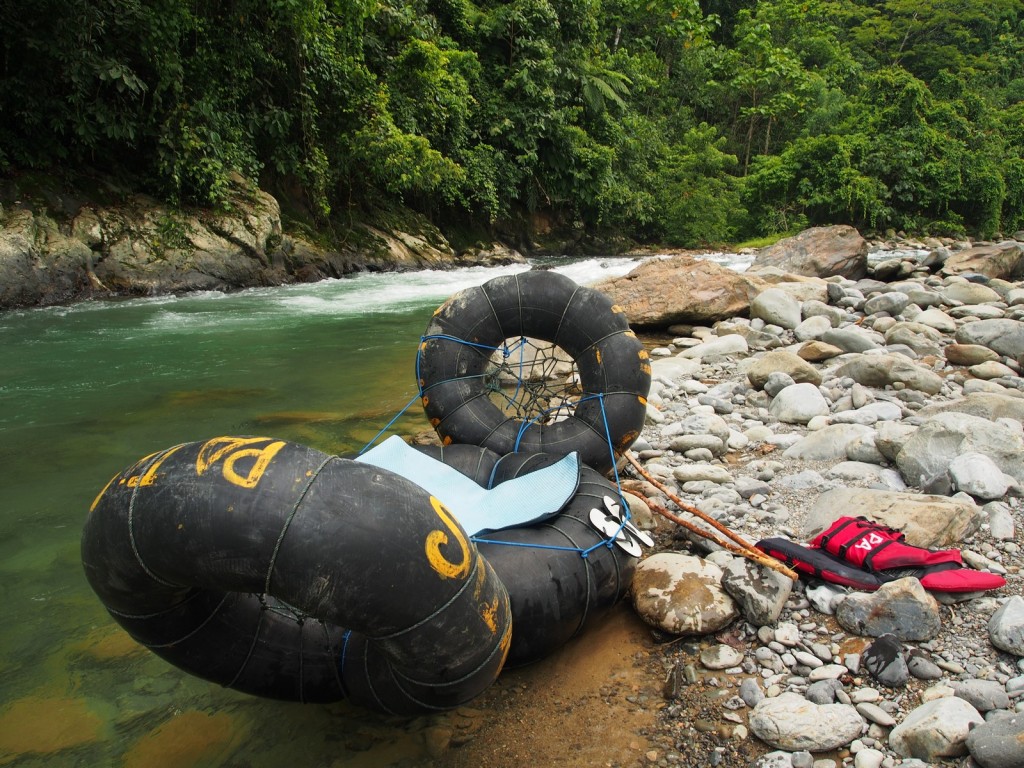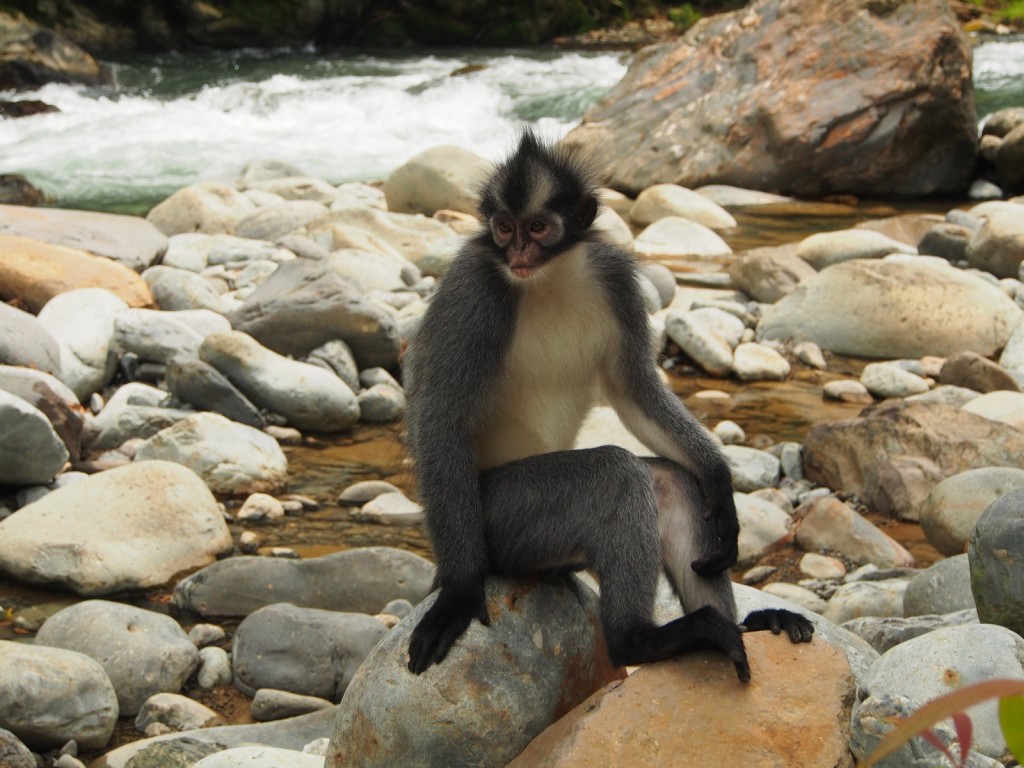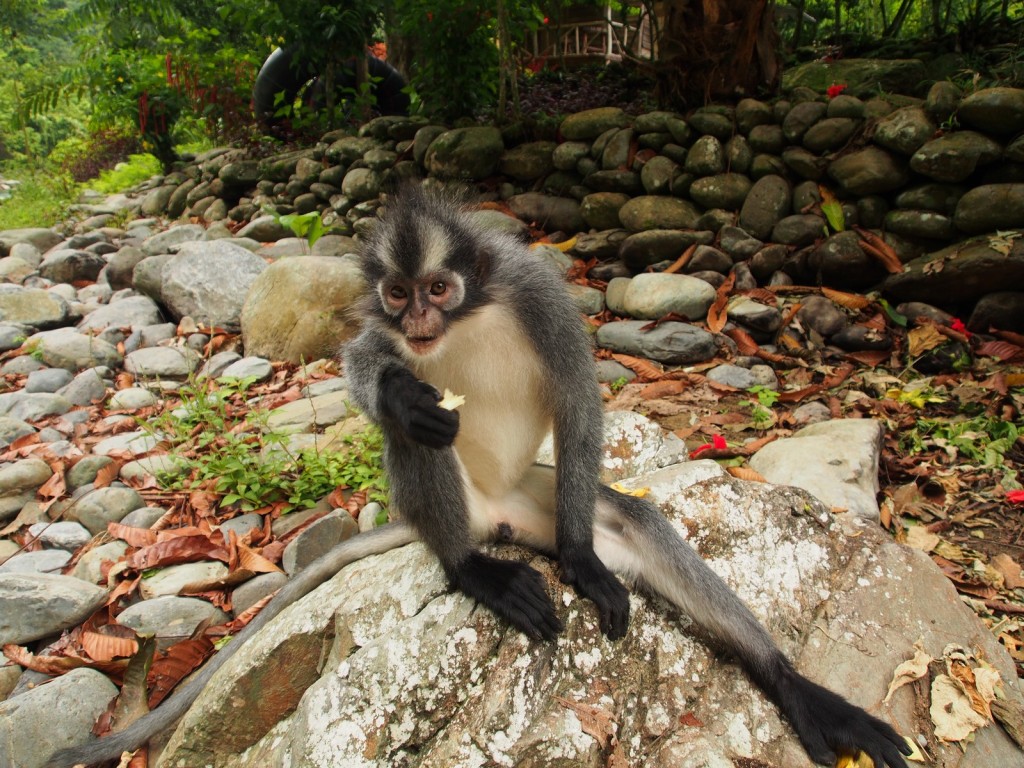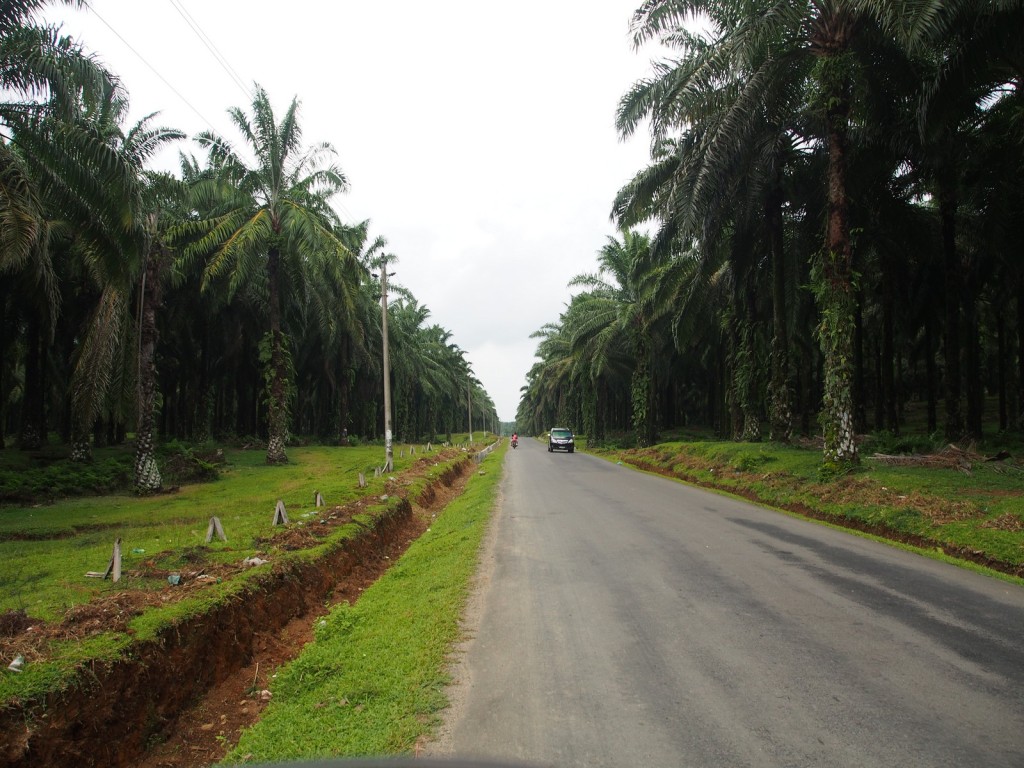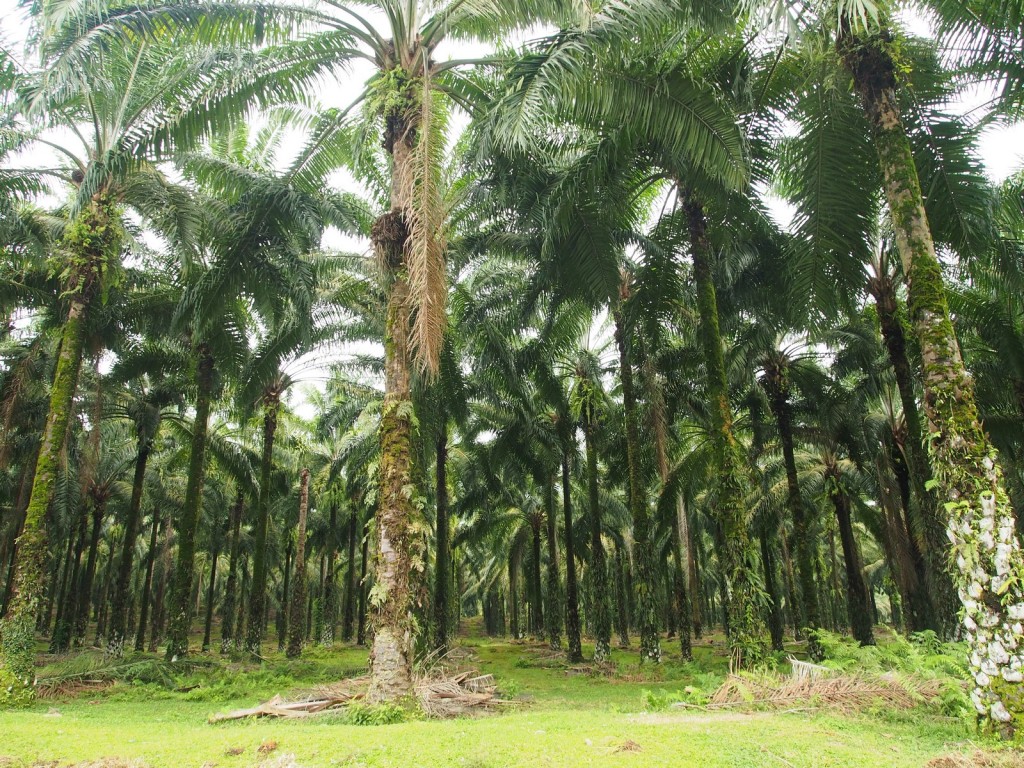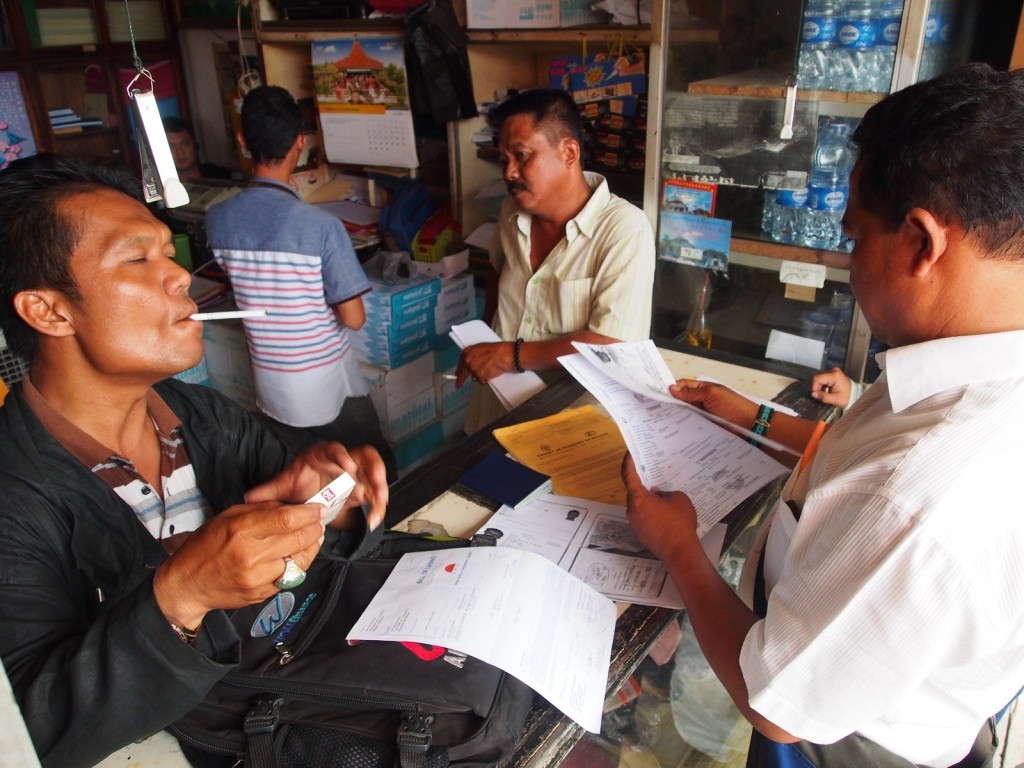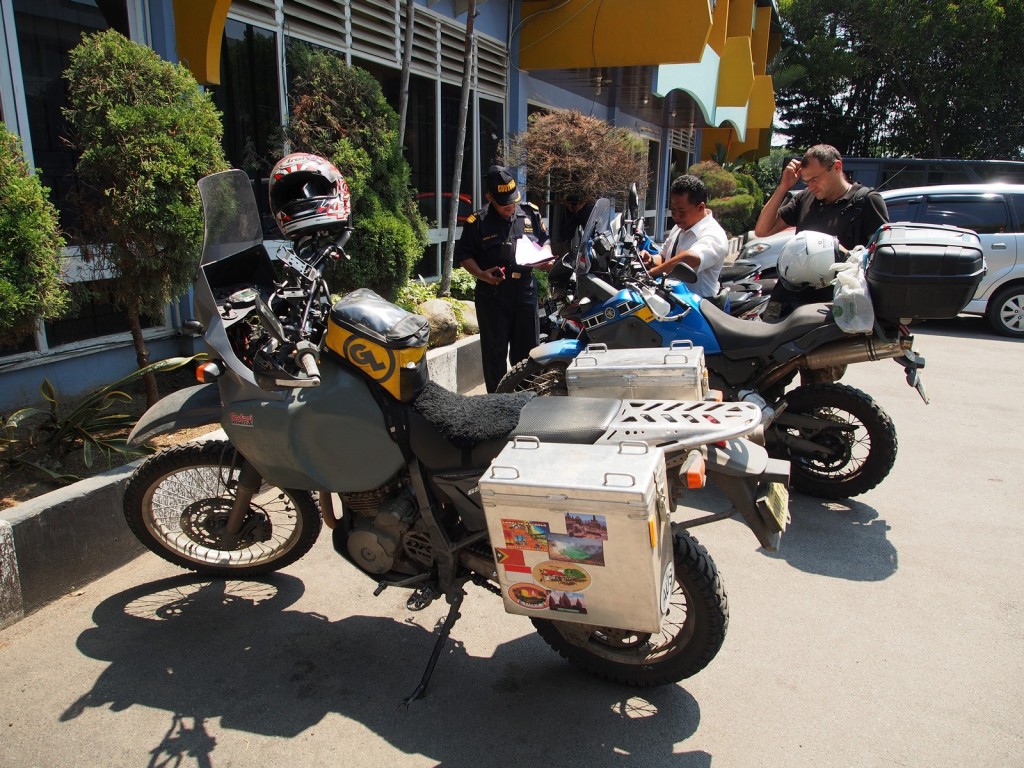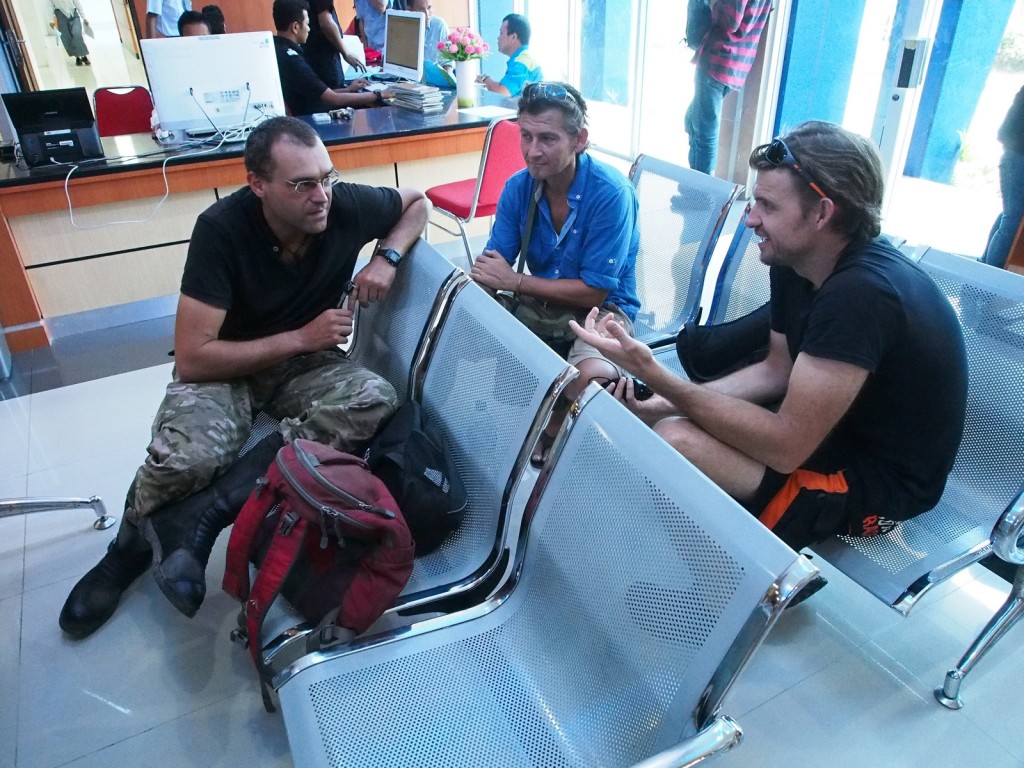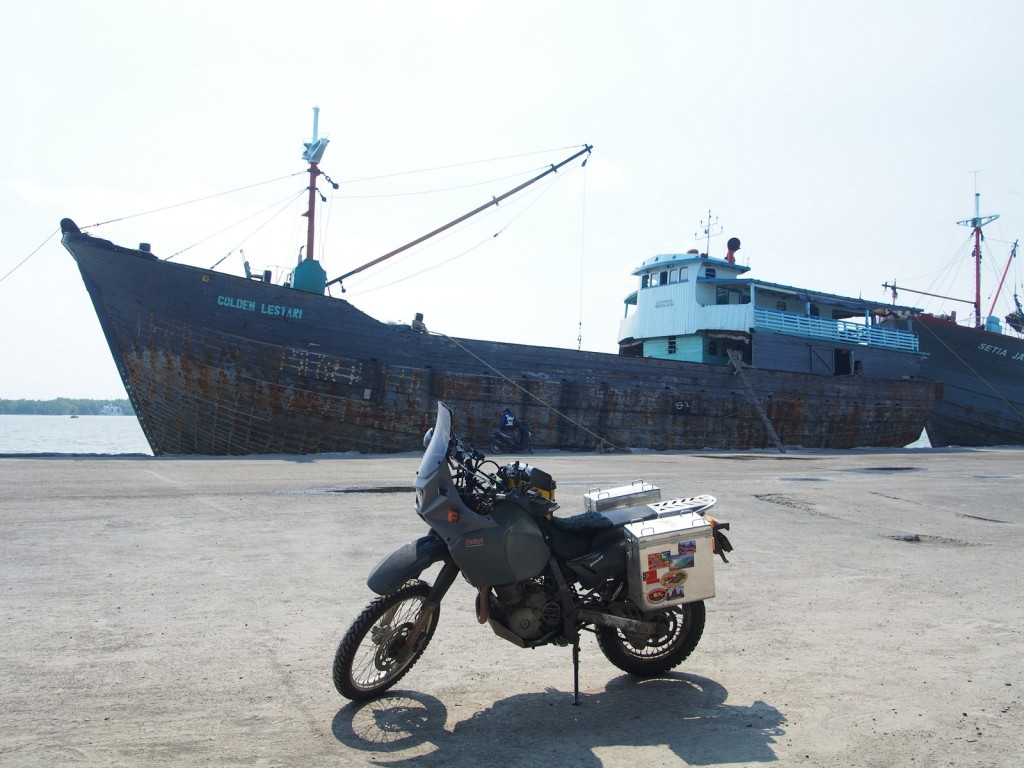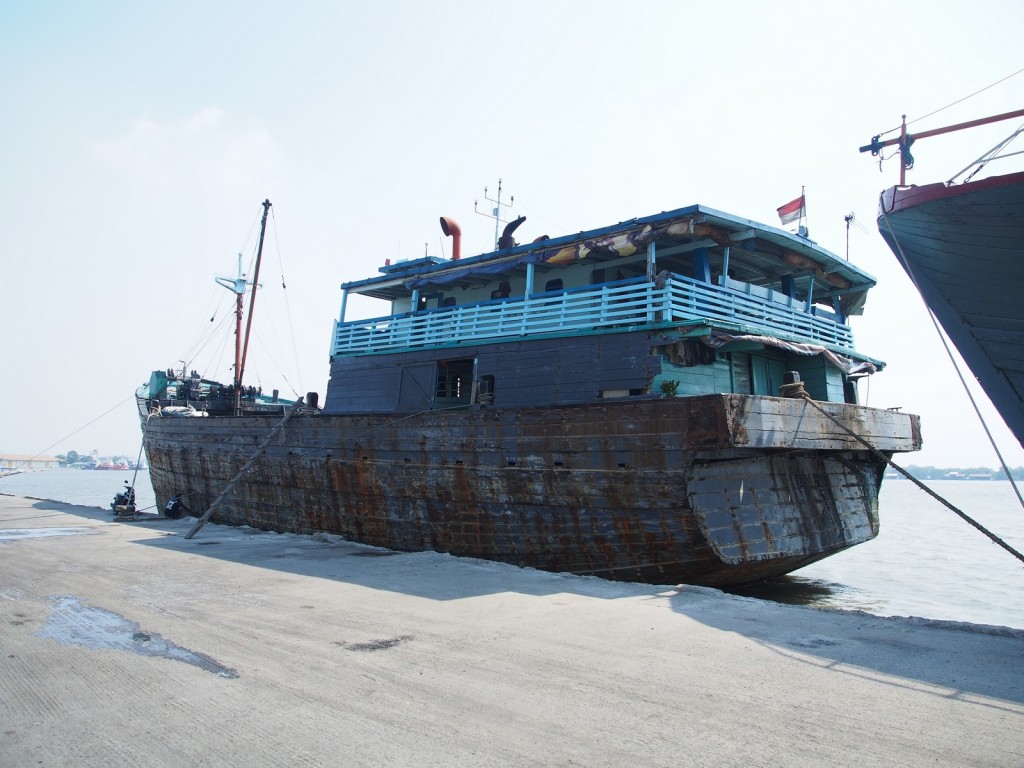With so many early starts in the last few weeks, my body clock has adapted and I awoke at dawn, looking out the window onto Lake Toba, only 5 metres away. I grabbed the camera for a few quick snaps while the light held.
Having a rest day in Lake Toba, I left the bike parked in the hotel’s garage and went for a walk to explore the local Batak culture and see the sights, such as they are.
The first major attraction on the island is the Stone Chairs in Ambarita, where the village elders would convene for major meetings and councils.
The Batak people are one of the few bastions of Christianity in Indonesia – fortunately for me meaning beer and bacon in the local restaurants!
The other half of the Stone Chairs is the execution place, where convicted criminals where ceremonially put to death.
The stonework in general was reminiscent of Easter Island or other, ancient lost cultures.
Lake Toba itself is a volcanic caldera, the result of the biggest volcanic eruption in the last few million years, which is thought to have been big enough to have had a major impact on the early genetics of the human race, as all but a few tens of thousands of early hominids died out as a result of the global winter in the years afterwards. In the last thousand years the crater has filled with water, and Samosir Island is a resurgent caldera, where continued geological activity has pushed back above the lake’s surface.
The main town, Tuk Tuk, is a tourist centre that was previously a must-do on the Hippie trail – hence some ‘interesting’ supplies available in town.
After ducking into a coffee shop to escape a brief shower of rain, the owner told me of a great lookout over the town up a little-used farmers’ trail.
The next morning I hit the road, but instead of crossing back East on the ferry, I looped around the north of the island to the land bridge on the western side.
Once on the mainland the road wound gloriously and torturously until reaching a lookout perched high up on the mountainside.
I rode my way through tiny villages and rough roads to the northern shore of the lake, where there’s a high waterfall billed as a local “Angel Falls”. Perhaps stretching the truth somewhat, but still some nice scenery back over the lake and of the falls.
With that completed I hit the road north towards Medan, my eventual goal. I still had a day and a half up my sleeve before having to be in Belawan, Medan’s port, to process customs and get my bike ready for shipping to Malaysia. Thus I pushed through the outskirts of Medan and west to the small village of Bukit Lawang, famous as the best place in Indonesia to see Orangutans – in 1973 a rehabilitation centre was founded, reintroducing captured Orangutans back into the wild, so the nearby National Park has plenty of semi-wild animals that are easy to find. Once here I had a choice – go to the feeding platform in the morning, to see the tamest of the Orangutans come and be fed, or hire a local guide and trek the jungle to seek a more wild encounter (but with no guarantee of seeing anything). With some deliberation I chose to take the guide for the day.
Bukit Lawang is strung out along the river, with the National Park border on one side, and plenty of guest houses catering for foreign and domestic tourists. Given my very limited timeframe (most people do 2 or 3 day treks), an early start gave us the best amount of ground to cover.
Within minutes the jungle proper closed in, and I had to place my trust in the guide knowing which paths to take.
Soon enough we found a semi-tame female who was familiar enough with humans to come and try to raid my guide’s bag for food. Thankfully he didn’t feed her, but the group that arrived 20 minutes later certainly did.
Leaving the larger group behind, we trekked further into the jungle, tackling some very steep ascents and descents to get to areas that most groups wouldn’t go – since it was just me, and my guide had judged me as being fit enough. For a chain-smoker he sure could clamber up those mountainsides!
Soon enough we came to a site where there was a mother and baby, with the baby entertaining itself by flinging around the trees with wild abandon.
Onwards through the jungle to another nest with another mother / baby pair. The males keep to themselves and only join with the females to mate – they don’t stick around to help rear the baby.
Pressing further into the jungle, we came across a male orangutan – very fortunately, as my guide said he only sees one around once every three months. The male however was less impressed, and started to chase us off his territory – my guide advised we beat a hasty retreat.
Fortunately after a hundred metres or so we had clearly exited ‘his’ territory, so he was content to climb a tree and pose for photos, making sure we didn’t try to intrude again.
Leaving him to his devices, we pushed further up the river, and found yet another mother and child. Again, the mother was content to sit in the nest and watch while the baby frolicked.
After drinking my fill of these beautiful creatures we pushed onwards back to the river’s edge, where the ‘easy’ way back to the village was waiting.
First though, lunch, with a cheeky companion (a Thomas Leaf Monkey) trying to steal whatever he could.
On the road back to Medan the threat to this beautiful wild jungle was evident – endless rows of palm trees, as part of a palm oil plantation. Vast swathes of the Sumatran jungle is being supplanted by these, threatening one of the most diverse ecologies on earth.
Meeting back up with Przemek for a well-earned beer that night, we prepared to tackle the Indonesian bureaucracy on Monday morning. There is no formal car ferry or other passenger ship between Indonesia and Malaysia, since the advent of super cheap flights through Air Asia and the like have killed their profitability. As a result the only practical way to do this part overland is through the famous Mr Lim and the onion boat – literally a rickety, 50+ year old boat that transports onions between the two countries on a weekly basis. As a profitable side venture they organise to take overland motorcycles and ‘grease the wheels’ of the customs and bureaucracy at either end.
The customs process was basically organised chaos, as expected, but also fairly simple – the agent took our carnet, passport and fee (around $140AUD) and told us to follow him. What ensued was a day of sitting around, moving from building to building following him as he talked to the right people, disappeared for long stretches at a time, and arranged the right official at each stage to sign off.
We were lucky enough to catch up with two Brits coming the opposite direction – Dan Skeates and Lyndon Poskitt, who we traded stories with of what was to come.
Finally it was out to the dock to see the (ahem) noble vessel on which our mounts would be crossing the Malacca Strait – impressive she was not. Barely seaworthy might be a more accurate description.
Tomorrow I fly to Kuala Lumpur to be reunited with Ghighi, then we have to get her bike out of the holding yard, screw it back together (for Sydney to KL they insisted the front wheel and other parts be removed, and the bike crated), then head north to Penang to collect my bike – if it hasn’t sunk!

